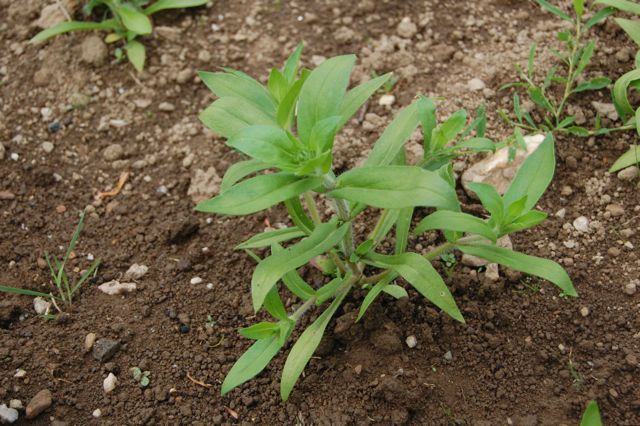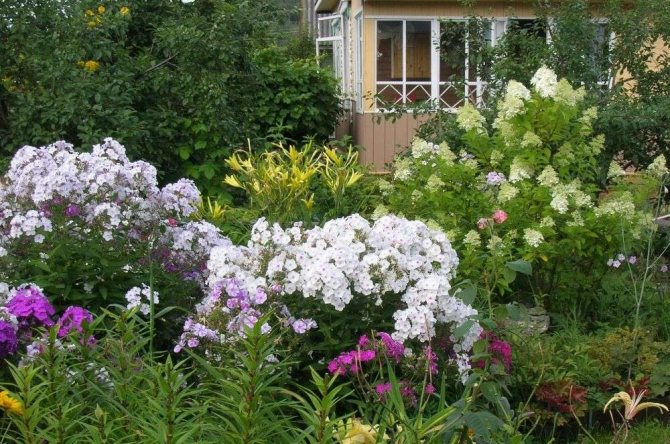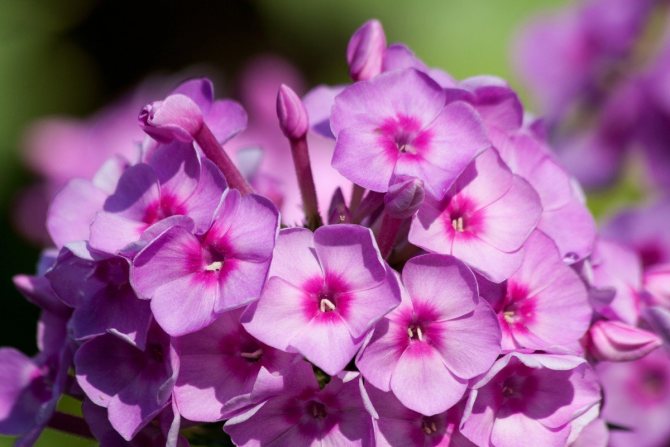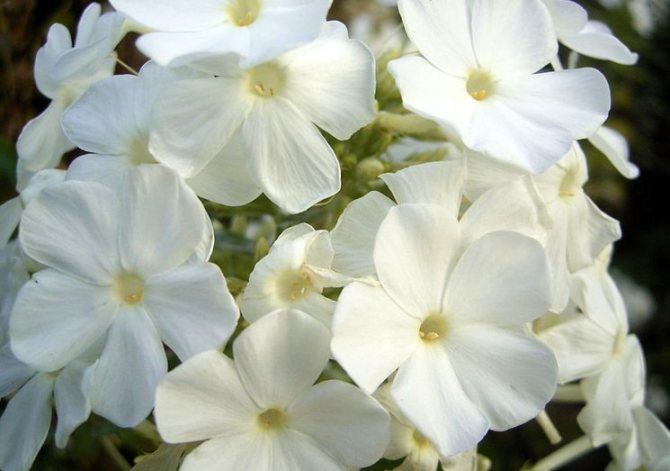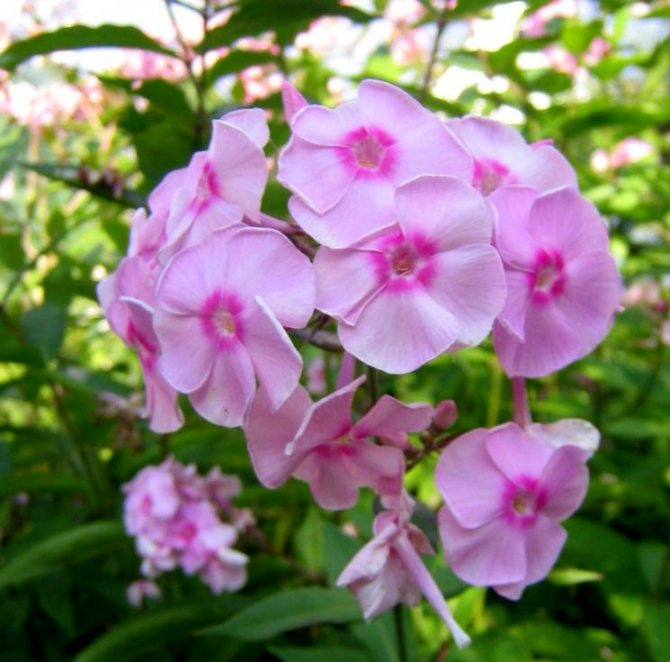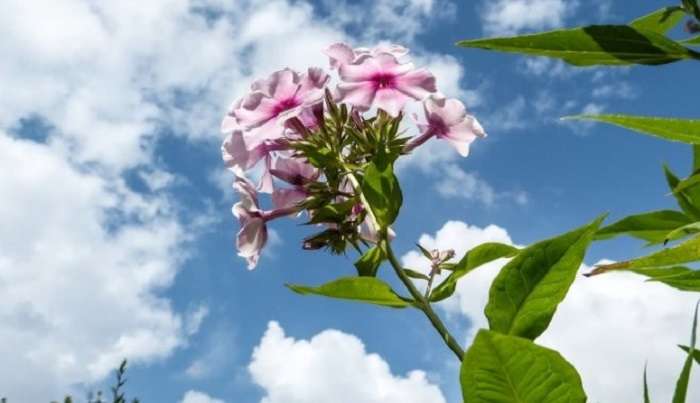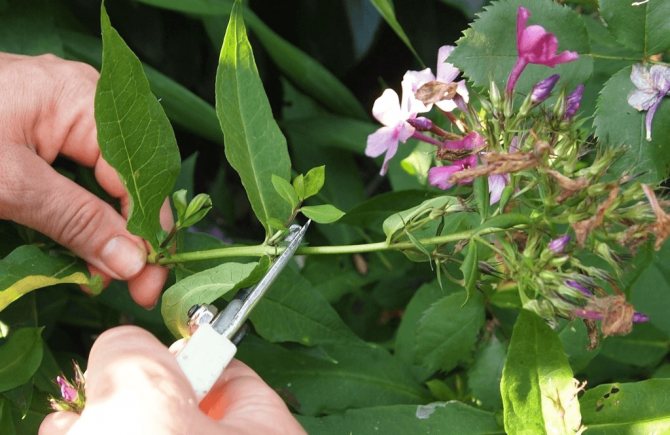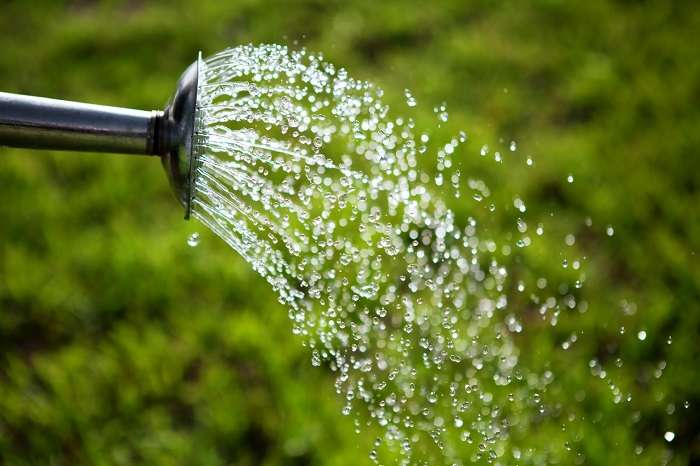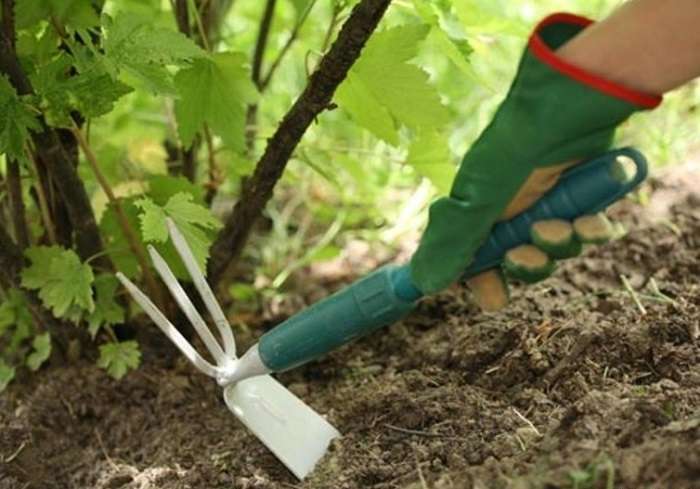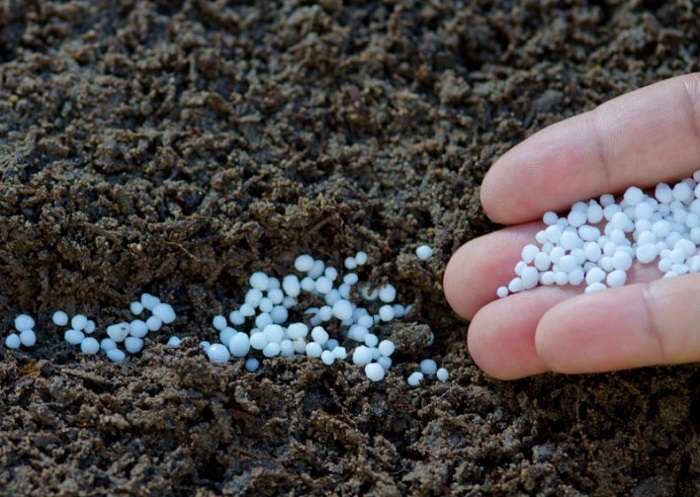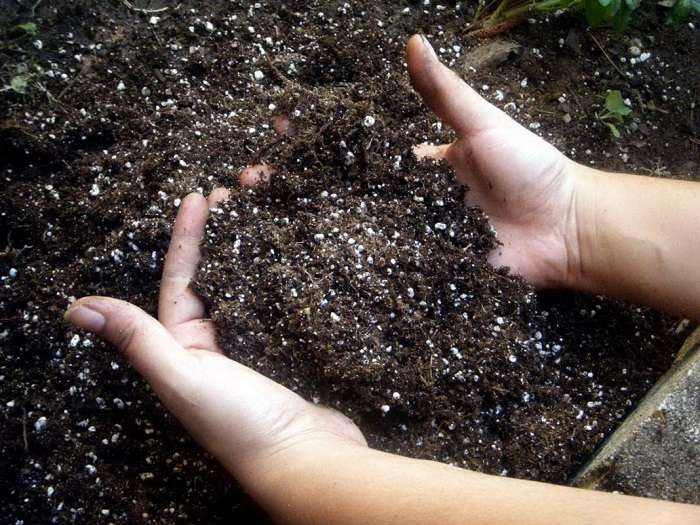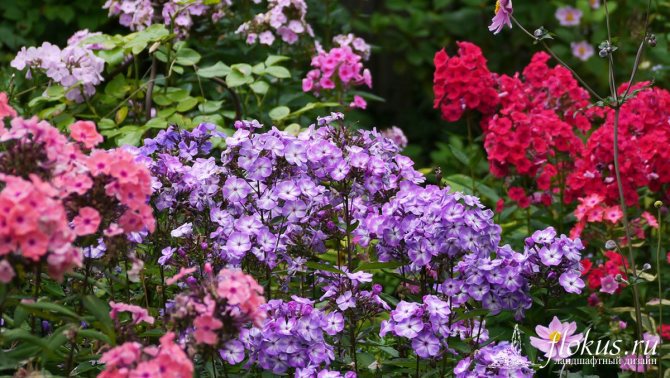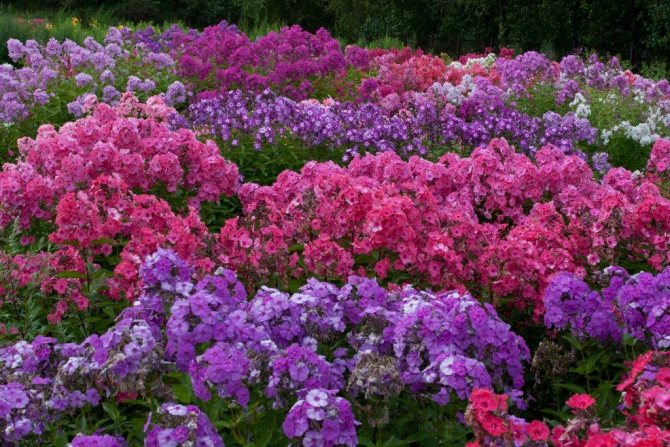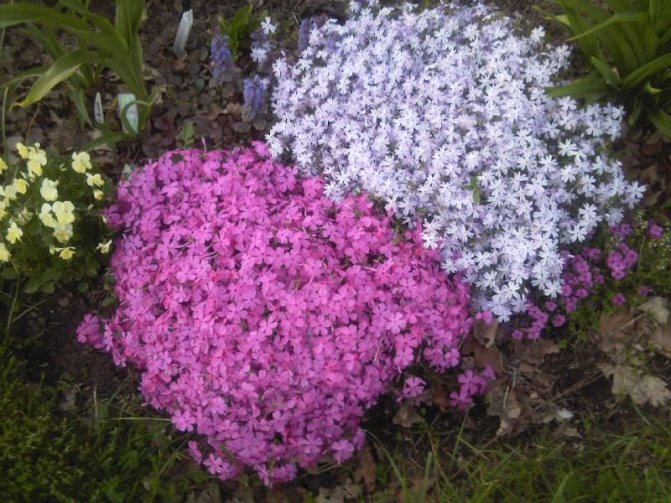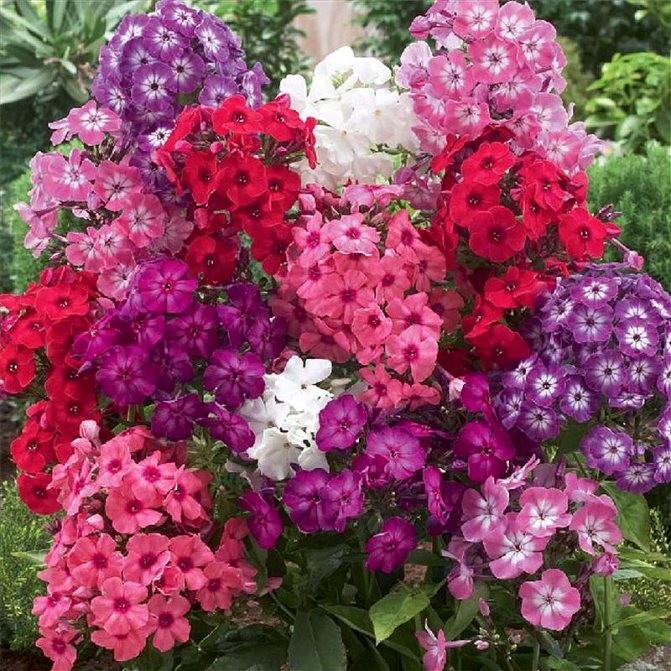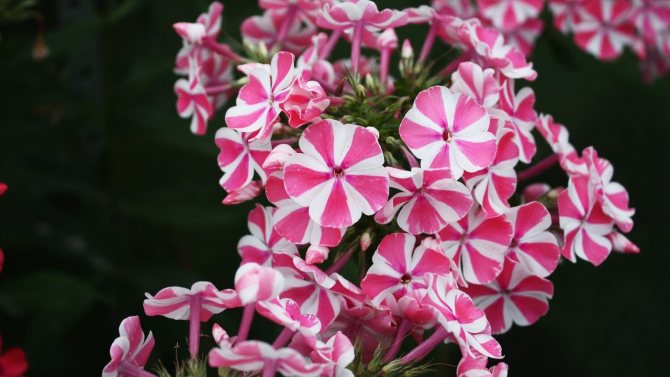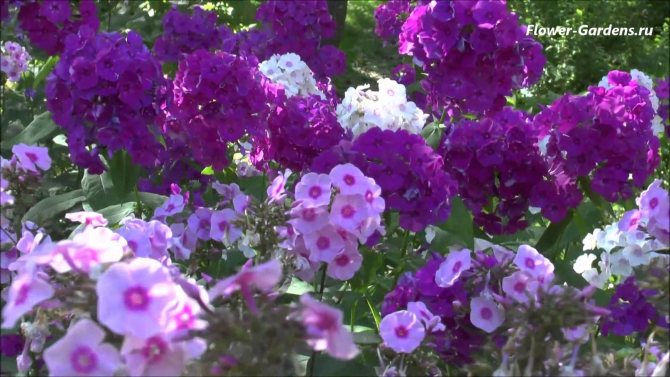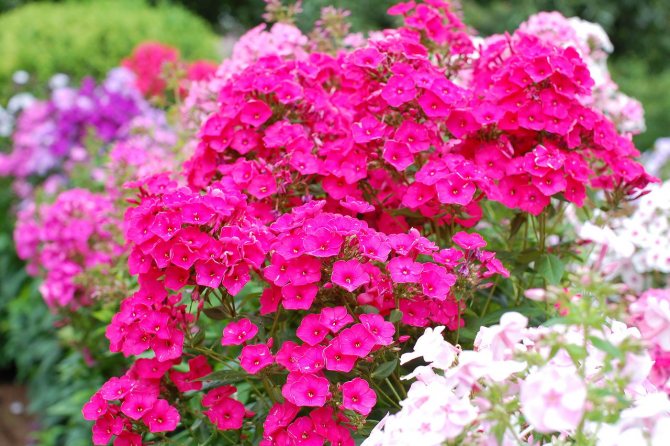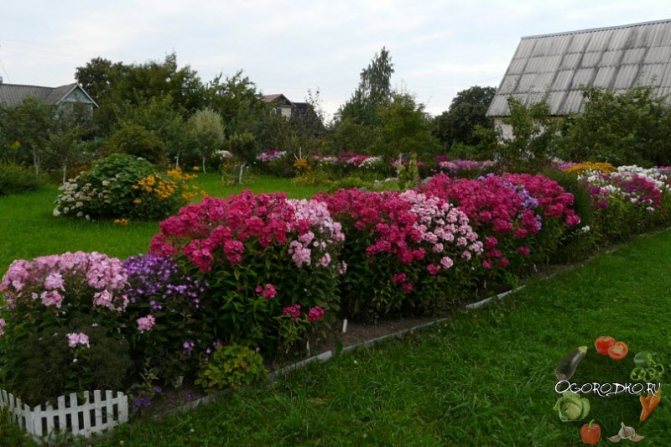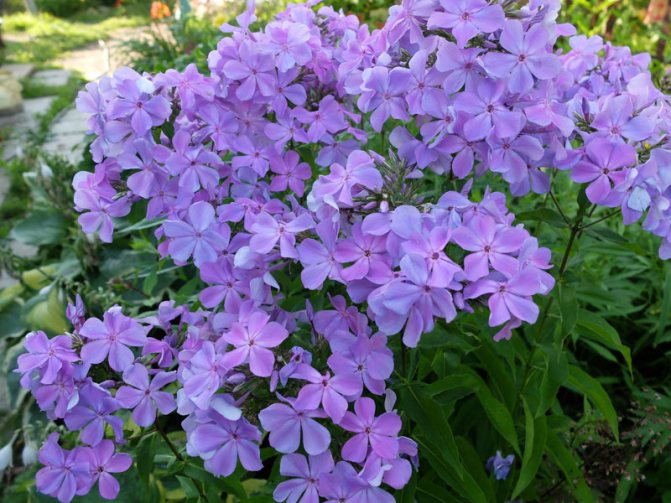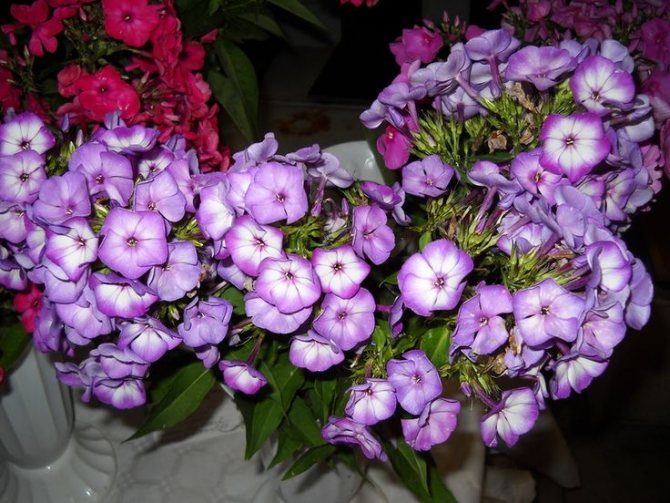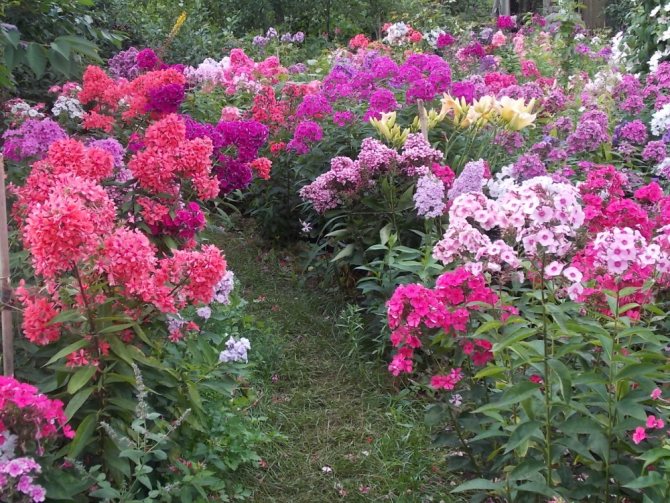Phlox are very unpretentious flowers that in most cases require a minimum of attention from the gardener. Having planted several varieties of plants, you can ensure flowering in the garden for all warm seasons. Adhering to some rules, it will turn out to protect the flower from pests, strengthen its immunity and ensure a safe wintering. Let's take a closer look at how to care for phlox in the country in the spring, summer and autumn periods.

Why transplant?
Phlox are actively flowering plants that amaze with a riot of colors. These are long-term flowers that can grow in one place for up to 10 years. If they are not transplanted, then the inflorescences begin to shrink, and the plantings themselves degenerate. Gradually, the bush begins to lose its decorative effect, loses the brightness of flowers and fades.
In addition, the soil on which phlox grows is depleted. Even frequent feeding is not able to restore the required amount of substances for the full development of the flower. Over time, pests and microorganisms accumulate in the soil, causing specific phlox diseases.
If we talk about transplanting phlox, then it is best to do this when the bush is 5-6 years old.
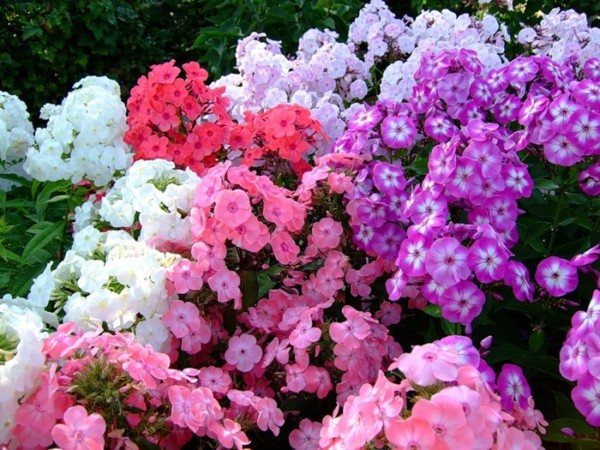

Selection and calculation of phlox planting material
When to transplant gooseberries to a new location
The choice of plant variety depends on the desired color of the flowers, the height of the bush and the duration of flowering. The number of purchased seedlings depends on the area of the soil on which they will grow. So, there are about 90 seedlings per 10 square meters.
You should also determine the planting density. To understand how to plant phlox, you need to determine the height of the plants and the duration of flowering. For small bushes, the distance between plants should be 30-40 cm, and between rows about 35-45 cm.For large plants, this is, respectively, 50-60 and 40-50 cm.
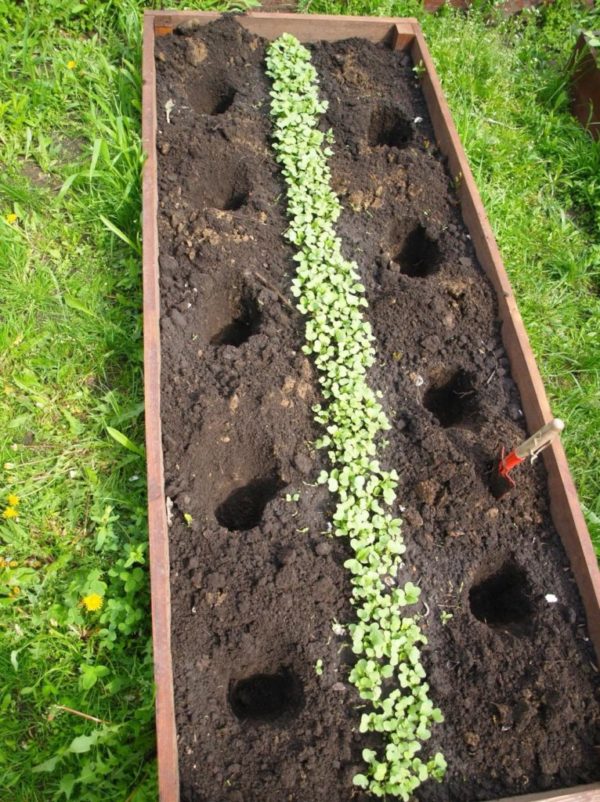

Distance between beds
When to transplant phlox
Many are interested in the question of when phloxes can be transplanted in order to harm them as little as possible. After all, this procedure for plants is considered quite traumatic and therefore it should be performed correctly. First of all, it concerns the timing.
Most gardeners unanimously say that transplanting is best done in the fall. At this time, the flowers stop their development and begin to actively prepare for the coming winter.
It is also worth noting that phloxes belong to the category of flowering plants that begin to grow roots when the snow melts. If you make a transplant in the spring and damage the roots, then you can not wait for flowering this year. However, this does not mean that phlox transplantation cannot be carried out in the spring. Some gardeners transplant flowers at this very time, believing that in the fall the plants will not have time to take root and will not survive the winter.
If absolutely necessary, phloxes can be transplanted even in summer. But in this case, it is necessary to preserve the earthen lump so that the root system does not suffer. With a summer transplant, it is not recommended to divide the bush.
So, the terms for transplanting phlox are as follows:
- Autumn: the last decade of August - mid-September.
- Spring: mid April - early May.
- Summer: at any time, but only in cloudy weather and in the evening.
Do I need to trim phlox when transplanting
Phlox pruning is carried out annually, regardless of the transplant.This procedure has a positive effect on the health of the plant, relieves it of old and dry shoots, and promotes the formation of young strong shoots. Pruning is carried out after the end of flowering, in late August or early September, that is, at the same time as the autumn transplant. Therefore, these works are often combined.


Before transplanting phloxes are pruned
The lack of green mass allows the bush to direct all its forces to the growth of the root system.
Phlox transplant
After you have decided on the timing of the transplant, you need to prepare for the process itself, which takes place in several stages. We will discuss this in more detail below. As mentioned above, the ideal time for a transplant is autumn, so we will consider all the nuances of a transplant that occurs at this particular time of the year. These rules apply to both spring and autumn transplants.
How to choose a seat
The rooting of transplanted flowers depends to a large extent on the condition of the soil. Wild phlox species grow in floodplain meadows and forest edges, where the land is characterized by high humidity and particular friability. These plants love soil that contains enough organic matter.
The soil for phlox should be sufficiently fertile and loose. If the flower bed is on loam, then the soil should be added with crushed peat or river sand. They will provide constant access of moisture to the root system and enhance the drainage properties of the soil.
Phloxes need frequent watering and this must be taken into account when choosing a seat. It is better to choose a place with a close occurrence of groundwater. But even this does not always guarantee high-quality moisturizing of the roots, so in hot summer the plants will need to be watered periodically.
Phloxes feel good in partial shade, they do not need constant illumination. It will be great if in the midday heat the inflorescences are protected from the scorching sun.
The only thing to remember is that phloxes do not tolerate neighborhoods with fruit trees.
Flower bed preparation
The flowerbed must be prepared in advance. This should usually be done 2 weeks before the phlox transplant in the fall. Advance processing of the site is explained by the fact that the land must settle before the transfer of plants.
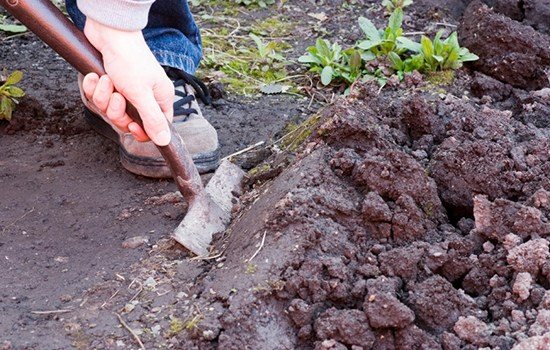

The soil of the flower garden must be dug onto the bayonet of a shovel, that is, to a depth of 20-30 cm. After that, weeds and other plant debris must be removed. Next, you need to fertilize. Suitable for autumn feeding:
- compost;
- humus + wood ash;
- potassium and phosphorus compounds.
Organic fertilizer consumption: 1 bucket per 1 sq. m. The amount of applied mineral fertilizers is written on the package. Nitrogen-containing substances are introduced only in spring, as this component causes the formation of new leaves and shoots.
The soil in the flowerbed must be moist. A few days before the transfer of phlox, it must be watered abundantly. If the weather is damp, then the amount of water can be reduced.
The holes in the flower garden should be 50 cm apart, since the phlox bushes grow quite strongly. The depth of the planting pit should be spacious: the roots of the plant should be freely placed in it. The developed root system of an adult phlox can lie to a depth of 20-25 cm.Another 5 cm must be added to this mark, since during cold weather the soil can freeze strongly, therefore the upper part of the rhizome is deepened 5 cm below the surface of the earth.
Planting material processing
The transfer of phlox to a new place contributes to the rejuvenation of the culture. With proper care and adherence to all the rules, the plants will bloom magnificently, but for this you need to choose the strongest and most viable specimens.
A couple of days before transplanting, the bushes need to be watered and then carefully dug out with a pitchfork. Try not to damage the roots. Next, you need to divide the largest flowers into separate cuttings, cut the shoots. Pruning stems is essential to preserve nutrients.A few leaves should remain on the shoot - this way the plant will survive the winter well, and in the spring it will quickly release young shoots. Make sure that the skin on the stems is dry and tough.
Too long flower roots should also be shortened. Their size should not exceed 15-20 cm. This is necessary in order for the plants to take root faster in a new place. Additional branches develop on the roots and the flowers are securely fixed in the ground.
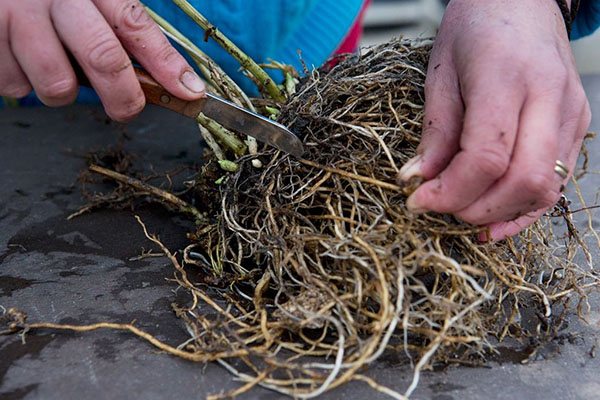

If you do not want to cut the roots, then the bush needs to be dug out, leaving a large clod of earth. This technology is more suitable for summer transfers. In this case, trimming of the leaves is not carried out, since the green mass is still involved in metabolic processes. Only dried flowers are removed.
Transplanting bushes into a flower garden
After the planting material is processed, and the site is prepared, then you can proceed to the main stage:
- Pour 1-2 liters of water into the wells.
- Place the roots of the cutting so that the neck is 5 cm below the ground.
- Cover the hole completely with earth and lightly tamp with your palms. On top of the soil, make a small mound 15 cm high. This will protect the stem from the winter cold.
With the onset of the first cold weather, put a layer of mulch 2-3 cm thick (dry sawdust, last year's leaves, crushed peat) on the flower bed. Plants do not need to be covered with plastic wrap or other synthetic materials. Lack of ventilation can lead to plant death. This is the whole care in the fall.
During the winter, keep the flower bed covered with snow. Remove the mulch in the spring so that the first spring rays warm the ground and plant roots. If all conditions are met, then in the first spring phloxes will delight you with magnificent delicate flowers.
Place for phlox
In the wild, phloxes grow on organic-rich and well-hydrated soils: forest edges, floodplain meadows. Varietal plants do not differ in soil selectivity. For them, in a garden or flower garden, places with fertile loose soil are prepared, mixing peat and sand into it. To reduce the time for watering, and phloxes need to be watered often, places with close groundwater are chosen for flower beds. Phlox is also planted in a shaded place.
Advice! When choosing a shaded part of the site for planting phlox, you do not need to stop choosing places under fruit trees or next to shrubs. Flowers don't like this neighborhood.
When is it better to plant phlox - in autumn or spring


Plant transplantation is possible both in spring, summer and autumn, if you do it carefully and surround the flower with care after the operation. But experienced florists recommend replanting perennial phloxes in the fall. They oppose spring work for the following reasons:
- the early awakening of phlox in the spring (already in April) makes the transplant traumatic for the roots of the plant;
- phlox transplanted in spring is sick for a long time and does not bloom this summer.
In the summer, replanting a plant is allowed if there is an urgent need to change its habitat. In this case, even flowering phlox is allowed to be dug out of the soil. The bush is cut off (peduncles are removed so that the flowering does not weaken the plant) and dug out with a large clod of earth so as not to hurt the roots. After transplanting, it is necessary to keep the soil moist and protect the bush from the hot sun.
Planting phloxes in the ground in autumn is the most favorable time for several reasons:
- the plant has finished flowering and is gradually preparing for winter sleep;
- life processes in the root system slow down, damage to small roots does not affect the life of the flower;
- the weather in early autumn is favorable for replanting - it is not hot and there is enough rain.
Attention! In regions with the early arrival of winter, phlox is recommended to be planted in spring or to grow early varieties that end their flowering early.
How to plant perennial phlox seeds. Sowing phlox in the ground
When sowing seeds of perennial phlox directly into the ground, there are two more options: sowing them before winter, at the end of November, or at the height of winter (January - February). Of the annuals, only Drummond phlox can be planted in this way - it is more resistant to cold weather. In what case is it easier to grow phlox from seeds? When is the best time to plant? The first method is preferable because in this case the seeds show the highest germination capacity (80-90%), and in a few months it can be seriously damaged. It should only be borne in mind that they need to be planted when frosts have already begun, because otherwise the seeds can germinate, and weak sprouts will not survive the winter.
The soil in the chosen place must be well leveled, put marks. Experienced florists recommend using self-made limiters, for example, cutting plastic cans or cans lengthwise into circles. Seeds are sown inside this circle. This is a guarantee that they will not be washed away by melt water and crops can be easily spotted after the snow melts. Seeds are sown before winter on frozen soil and lightly sprinkled with dry earth. You don't need to water them! If the seeds are fresh, usually the seedlings are friendly in the spring.
For winter sowing, you can use the same disposable plastic containers as when germinating seeds in an apartment. Only it is necessary to close them on top not with a film, but with a lid or spunbond, and not water. Experienced growers recommend taking the containers with the planted seeds into the garden and placing them on a flat surface, so that they are covered with a thick layer of snow (at least 30 centimeters). So it will be possible to create acceptable conditions for their germination in spring, and the seeds will undergo natural stratification. After arriving in the garden in spring, you need to remove the lid from the container so that the melting snow gets on the seeds and soaks the soil.


Perennial phlox grown from seed, with proper care, usually bloom in the second year. Young plants in the first winter must be insulated using fallen leaves or needles. It is not necessary to do this in subsequent years. As a rule, phlox planted with seeds before winter turns out to be more resistant to winter frosts than expensive planting material brought from European countries, where winters are usually milder.
Details about planting phlox seeds (perennial) before winter are described in the below


During winter sowing, in January - February, the actions are the same: an even place is selected and the seeds are sprinkled with frozen soil, and on top - with a thick layer of snow.
Terms of planting and transplanting phlox
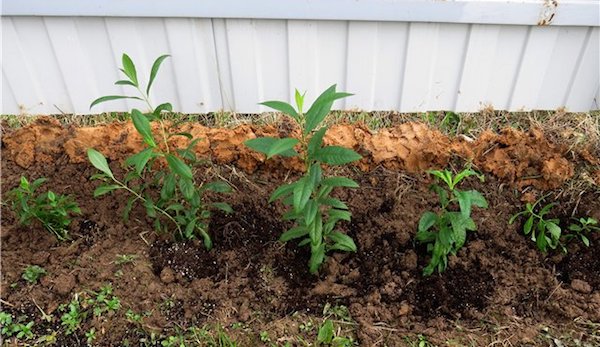

So, the gardener has decided on the time of phlox transplantation, now it is necessary to set suitable work dates. There is no exact date when to plant phlox in open ground in the fall - it all depends on the climate of the area and other factors.
For example, many gardeners are guided by favorable dates from the lunar calendar when working with plants.
According to the lunar calendar 2018-2019
When to plant phlox in open ground in the fall according to the Lunar calendar:
- September - from 1 to 6 (until 5 pm), 8, from 10 to 19, 23 and 24, from 26 to 30;
- October - from 1 to 3, 7 and 8, from 10 to 16, from 20 to 23, from 25 to 30;
- November - from 3 to 6, from 8 to 12.
In the spring of 2019, favorable days for planting and transplanting plants:
- April - 2 and 3, 7 and 8, 20 and 21, from 24 to 26, 29 and 30;
- May - 1, 4 and 5, 17 and 18, from 21 to 23, from 26 to 28, 31.
On the dates indicated, flowers and other plants are easier to transplant and get sick less.
Depending on the region
In order for the perennial to take root after planting and not die with the arrival of winter, the earth should not freeze for another 1.5 months. Based on this requirement, the gardener determines the date of planting in his area.
Facilitates the process of keeping a weather diary, which annually records the timing of the onset of frosts, thaws and other phenomena that affect the life of plants.
In the Middle lane and the Moscow region, phloxes are planted throughout September. If the planting is carried out at the end of the month and soon there is a promise of frost on the soil, the bushes are mulched with a layer of peat, sawdust or fallen leaves to keep warm.
In the spring, it is necessary to remove the mulch on time so that it does not interfere with the perennial seedlings, and they do not get stuck.
In the Leningrad Region, it is recommended to plant perennials in the first three weeks of September. In the damp climate of the region, it is recommended to pay special attention to soil drainage in the area with phlox.
The Urals and Siberia are a harsh land with a short autumn and an early arrival of cold weather. Perennial flowers are placed here in the ground in late August - early September. Late disembarkation is ineffective. Planting phlox in the spring can give the best results for plant engraftment.
In the south of the country, autumn is warm until November and even December. Phlox can be planted throughout October. It is not necessary to insulate the plant.
In Ukraine, the climate is mild, similar to the Russian south. Flowers are planted at the end of September - October.
In Belarus, phlox is recommended to be planted in the second half of September, focusing on the weather.
Care
Growing a plant will not require a lot of effort and trouble. Phloxes are moisture-loving, therefore, first of all, it is necessary to monitor the soil moisture. Watering should be regular and abundant. But the culture also does not tolerate stagnant water in the ground.
The shrub should be watered at the root so that water does not get on the inflorescences and leaves. On very hot days, watering should be done in the morning and evening.
Around the plant, it is necessary to regularly remove weeds and loosen the soil. Will prevent weeds and keep the soil moist with mulch (peat or humus) that can be spread around the plant.
It is recommended to feed bush phlox three times per season:
- As soon as the first shoots and leaves begin to appear on the plant, it must be fed with organic fertilizers. It can be wood ash or manure infusion (for 8 liters of water - 30 g).
- During the swelling of the buds, a second feeding is done with special mixtures for flowering plants or mineral fertilizers.
- At the end of summer, after flowering, the bushes are fertilized with phosphate and potassium. This will help the plant to set buds for the coming season and give strength for root development.
Fertilizers are applied after watering the plant.
In the fall, after the bushes have faded, they need to be prepared for winter. This requires:
- Cut off the shoots before the first frost so that only 5–6 cm stumps remain.
- Cover the bushes with dry peat or fallen leaves. Leaves are harvested in spring, and peat can additionally serve as fertilizer.
- At subzero temperatures, when the ground is already frozen, pour one tablespoon of mineral fertilizer and a little ash under each bush.
In this form, phloxes will be able to winter well and will not freeze in snowless winters.
How to plant phlox in the fall


For planting a plant, it is preferable to choose a not hot day, in the summer it must be cloudy or plant flowers in the evening. Phlox can be planted with roots (cuttings), cuttings and seeds.
Choosing a landing site
Phloxes are planted in a sunny area of the garden, lacy shade from trees is allowed. Varieties with dark colored petals can burn in the bright sun, they are planted in partial shade.
Flowers must be protected from strong gusts of wind, placing them under the protection of buildings and shrubs.
The soil
The preparation of the soil in the flower garden for phlox begins 3-4 weeks before planting. The root system of a perennial does not penetrate deeply, so they dig up the ground by 15-20 cm.
Phlox loves loose, fertile and moisture-absorbing soils. Suitable for him are loams enriched with sand, peat and humus. More sand is applied to clay soils, more humus to sandy soils. Average doses of additives per 1 sq. m:
- river sand 6 kg;
- horse peat (not sour) 2 kg;
- humus (compost or rotted manure) 8 kg;
- ash 2 cups;
- phosphorus-potassium fertilizers for perennials 100 g.
Important! Nitrogen fertilizers are not applied during autumn planting. They stimulate the growth of green mass, which is not necessary before the onset of cold weather.
For better dissolution of fertilizers in the ground, a few days before planting the plants, spill the garden with water. It is necessary to wet the ground to a depth of at least 20 cm.
Operating procedure
How to plant perennial phloxes in the fall:
- Planting holes for phlox are planned at a distance of 50-70 cm from each other - the flower grows quickly and the bush needs a lot of space. The depth of the fossa is 20-25 cm, but it must be made wide, since the phlox roots are straightened to the sides, and not down.
- The seedling is placed in the center of the hole so that the root collar of the flower drops 3-5 cm below the soil surface. The roots are gently spread to the sides.
- The plant is covered with fertile soil, pressing the earth with palms to the roots. A mound of 12-15 cm is made above the root collar for protection from the cold.
- Water the bush abundantly.
When the air temperature drops to minus marks, phloxes are mulched with peat or sawdust, with a layer of 20 cm.
Features of planting phlox subulate
The plant does not tolerate high humidity in the root zone. A drainage layer (crushed stone or expanded clay) of 5-10 cm is poured into the landing holes for it.
The distance between the bushes of the styloid phlox is maintained at 30-40 cm, since the size of an adult plant is modest - a height of about 20-30 cm.
For better survival, the seedling or stalk is kept in a solution of root or heteroauxin.
How to plant by cuttings
Cuttings from phlox are harvested in late spring - early summer. The twigs are broken off from the base of the root, trying to get a stalk with a "heel" - a piece of part of the root. The twig is cut to a size of 10 cm and planted in a shady place on a bed with fertile and loose soil. So that the cuttings do not rot, they are sprinkled on the garden bed not with earth, but with sand.
Autumn transplant
The period when phloxes can be transplanted lasts from the last decade of August to the first days of September. This period allows the transplanted phlox to be given time to adapt to frost.
Preliminary preparation
A new place for a flower begins to be prepared 2 weeks before planting. The soil is dug up, weeds and other debris are removed, and top dressing is applied. In autumn they feed:
On a note! A few days before planting, the land of the new flower garden and the phlox bushes that will be transplanted are watered abundantly.
Landing
When transplanting phlox, the following stages can be distinguished:
They are placed at a distance of about 50 cm from each other (for bushes of tall varieties, the distance is increased to 60 cm), so that there is enough space for growing bushes. The depth of the planting cut is up to 30 cm (25 cm is set aside for a spacious arrangement of the roots, and 5 cm is added to reduce the risk of freezing of the root system during the winter cold).
Preparing a bush for transplanting
The plant is carefully dug out so as not to damage the root. The largest bushes are divided, taken one by one, if they want to propagate the plant during transplantation, and the shoots are cut off on them, leaving only a part of the stem with several leaves.
Roots longer than 20 cm are shortened.
On a note! When transplanting without reproduction, the strongest flower is chosen and all manipulations are performed only with it.
- Disembarkation.
Before planting phloxes, 1-2 liters of water are poured into the planting recess. Then the bush is placed in the center of the hole so that the neck is covered with earth at a distance of 5 cm from the surface. Sprinkle the plant, compact the earth so that there are no voids. The root system is abundantly watered, the earth is poured under the bush and mulched.
Interesting! The advantage of autumn planting is associated with the peculiarity of the plant to develop without waiting for the snow cover to melt and the earth warms up. Phlox transplanted in autumn will grow in early spring and prepare for flowering. This time is also attractive because the bush dug out and processed for planting cannot be accidentally damaged.
Transplanting phloxes in the fall to another place
Perennial phlox can grow in one place for up to 8-10 years.But gradually the bush grows strongly, the powerful roots lack nutrition, the plant blooms worse and withers. This should not be allowed.
A flower is transplanted to a new place every 5-6 years, combining the work of transplanting with dividing the bush.
Phlox transplantation in the fall is carried out at the time indicated above.
- The bush is removed from the stems by cutting off the tops at a height of 15-20 cm. Carefully removed from the ground by digging the flower in a circle.
- Phlox roots are freed from the soil and examined. If necessary, remove diseased and damaged parts.
- The bush is divided into parts with a sharp knife or powerful pruning shears in such a way that buds of stem growth are preserved on each division.


Division of the phlox rhizome and the separated part of the rhizome: a - the remainder of last year's stem; b - the rudiments of new stems
- Each cut is kept in a fungicide solution (potassium permanganate, phytosporin), the cut is powdered with ash.
- The phlox root is planted in the planting hole according to the scheme described above.
The transplanted phlox is regularly moistened for a month while the plant takes root in a new place. In winter, plantings are covered with mulch to protect them from frost.
Video: transplanting phloxes in the fall to another place
Perennial flowers blooming lush throughout summer and fall help fill the garden with vibrant colors. Today we examined the features of planting and transplanting phlox to another place in the fall. We hope this information will be useful to you.
Phlox is a popular garden plant, which, due to the variety of varieties, can decorate any flower bed or summer cottage. However, for a stable and bright flowering, they need not only appropriate care, but also timely transplantation. All the features of this process will be discussed in detail in the proposed article, which will allow this procedure to be carried out in compliance with the technology even for novice gardeners.


Is it possible to plant phlox in June. Landing nuances


The right planting site and the “right” soil are essential ingredients for the successful growth and flowering of phlox.
We choose an open and sunny place for planting, since phloxes need a lot of light to form high-quality dense inflorescences and bright juicy flowers.
They, of course, can grow well with a lack of light, but their inflorescences will be very sparse, and flowering will come much later. With sufficient light, phlox grows squat, sturdy, while in the shade they are very elongated.
Although phlox can grow on various soils, they still prefer medium and light loamy, fertilized, well-moistened, loose, slightly acidic or close to neutral.
And if we also add well-decomposed manure, humus, matured compost, ash, mineral fertilizers, then the plants will grow powerful, beautiful, healthy and will bloom for a long time and magnificently.
Most of the phlox roots are at a depth of 25-30 cm, so we need to cultivate the soil layer well to such a depth. It is best to do this in advance, in 2-3 weeks, since the soil should settle so that the roots do not become exposed during planting and watering.
Phlox can be planted throughout the growing season. In spring, this can be done as soon as the soil thaws and from the beginning of the regrowth of the shoots until they reach a height of 10-15 cm.
For spring planting, flowering times are usually delayed by 10-12 days. And do not forget that in spring the planting time is very short - only the first half of May.
Phlox are planted at a distance of 40-60 cm from each other, taking into account the size of the seedling and the characteristics of the variety.
When planting low curb varieties, the distance can be reduced, and if we plant powerful phlox varieties, then the distance between them is increased. In the fall, planting dates are from the second half of August to the end of September, but you should not hesitate too much, as it is necessary for the seedlings to take root well, otherwise they may freeze out if the winter is cold and with little snow.
In autumn we plant phlox with stems and leaves, cutting off only the faded top, because the leaf apparatus is still working and will help the plant to prepare well for winter.
Phlox planted in the fall will bloom on time next summer.
If you are late with the purchase of planting material, then it would be better not to plant it, but to dig it in an area with loose soil to a depth of 20-25 cm, protecting it from frost with mulch or non-woven covering material. It is possible to plant phlox in summer, but with a clod of earth and abundant watering, while removing the inflorescences in order to direct all the forces of the plant to rooting.
Before planting, we prune the roots in order to rejuvenate them, and also cut out all diseased and dented parts of the plant to healthy tissue.
Phlox can also be transplanted even in a flowering state, but only if the seedlings are carefully excavated and abundant watering before they take root. Do not allow the rhizome to dry out, as in this case the plant will take root much worse, hurt and in the future, its development will slow down. We make the planting hole in such a size that the root system is placed in it freely and we fill it with water.
After the water is absorbed, we proceed directly to planting the seedling. We spread the roots well, fill the voids around them with nutritious soil, lightly press with our hands and water.
In this case, the top of the rhizome should be 3-5 cm below the soil surface. If we plant a plant too shallow, then it can suffer from adverse weather conditions and even die in winter, and if the planting is deep, then the development of a two-tiered root system is possible and the development of the bush slows down.
Pay attention to the possible shrinkage of the soil after planting, if this happened, then add a layer of loose nutritious soil to the roots.
Until the plant takes root (this is about two weeks), it is necessary to constantly maintain soil moisture.
When to transplant phlox
The most favorable period for transplanting these flowers is autumn, but at the same time phloxes are able to adapt quite well to transfer to a new place at virtually any time of the year.
All the features of this process, depending on the specific season, are discussed in detail below:
- Autumn is the most recommended time for transplanting as the phlox root system thrives in cold conditions. and begins to actively develop immediately after the snow melts, and at the same time it does not need to wait for the soil to warm up. Another advantage of this option is that the plant does not have stems with increased fragility, which can be accidentally broken during the procedure, which is associated with the preliminary seasonal pruning of flowers.
- In the middle lane, phlox transplantation is often practiced in the spring, but this process will be much more difficult., since you need to be very careful not to accidentally damage the root processes that have awakened after hibernation. The fact is that this plant very poorly tolerates even a slight mechanical effect on its root system, so the flowering period in the current season may not come.
- Transplanting in the summer is extremely rare, but if necessary, it can be carried out, however, it will be necessary to exclude the process of separating the bushes. The procedure must be carried out extremely carefully so as not to touch the roots; for this, the bush must be dug around the perimeter and transplanted to a new place along with a large lump of old soil.
Depending on the selected time of year for transplanting phlox, certain periods are set for the implementation of this procedure:
- In the autumn period, the transplant can be carried out from the last week of August to the beginning of September., then the plant will have enough time to settle in a new place before the onset of the first frost.
- In the spring, meeting deadlines is most important., you need to carry out the procedure at the end of April or early May.
- In the summer, the timing is uncertain, can be transplanted throughout June, July and August.
The use of phlox flowers in garden design (with photo)
Phlox are versatile plants. They have long gone beyond the grandmother's village front garden. Phlox can beautify modern gardens of almost any style, from country to regular. The use of phlox flowers in garden design is possible in an ordinary flower bed, in a mixborder, and in a flower garden bordering the path, and as an array on a lawn. Although when choosing phlox, few people manage to foresee all the details and not be mistaken, some points should still be borne in mind.
When choosing varieties, it is important to take into account the decorative features of phlox in the design of the garden, not only during flowering, but also throughout the growing season.
Look at the photo of phlox flowers in the garden, which shows the most striking examples of the successful use of culture:
Phlox, large hosta and daylily. Such a trinity looks spectacular throughout the growing season. First, the hosta will be the soloist, then the daylily will be in the foreground, and the exuberant flowering of phlox will be the final chord. An additional charm of the composition is given by the combination of various forms of the leaves of these plants.
Phloxes with classic green and variegated foliage can be safely planted in one composition - there simply cannot be unsuccessful options. But the masterpieces are sometimes obtained.
It must be remembered that lighting affects not only the development of phloxes. It can change the height of plants, the color tone of both leaves and flowers, and also shift the flowering time.
For open, windy or elevated places, the shortest phlox are suitable, with strong stems and a compact bush.
In sunny areas, varieties that are resistant to flower fading and powdery mildew will look especially impressive.
When choosing a place for planting variegated phlox, it is important to remember that the original color is fully manifested only under good lighting conditions. However, under the influence of the midday sun, leaf burns are often observed on variegated phlox, sometimes the leaves even bend or wrinkle.
Transplant goals
Phloxes are actively flowering plants, so transplanting is a mandatory process for them, which is carried out for the following reasons:
- Loss of attractive appearance over time, inflorescences become faded and not so large. This is especially noticeable when growing old and young bushes in the same flower bed, but after transplanting the plant will be able to return to its previous state.
- Active nutrition gradually depletes the soil. At first, the introduction of fertilizer mixtures into the soil can save from this problem, but in the future these measures will not be enough, and an acute shortage of nutrients and chemical elements necessary for the full development of phloxes will be felt in the ground.
- Long-term cultivation of phlox in one place leads to uncontrolled reproduction in the soil of microorganisms and insects that parasitize this plant.
- Outbreaks of flower diseases that can destroy the plant are possible. Periodic transplants to new locations are an effective preventive measure.


Summer transfer
The end of spring and summer is the time of flowering and it is especially important for flower growers to know how to transplant phloxes in the summer without harming the plant, not to interfere with the development of inflorescences. The reason to interfere with the development of a plant during budding and flowering can be different, but always weighty:
- the need to rejuvenate a perennial flower, so that the bush after transplantation becomes more luxurious, and the flowers are larger;
- depletion of the soil when regular feeding fails to compensate for the deficiency of nutrients;
- reproduction in the soil of pathogens and insects parasitizing on the flower;
- the threat of flower infections that can cause the death of the plant;
- banal redevelopment of the territory. It may be associated with a change in the location of the flower garden due to construction, the transfer of the recreation area to a new location.
Phlox can be transplanted in any summer month, be it August, July or early summer. To perform work, it is advisable to choose a cloudy day, morning or evening, when there is no hot sun.
Important! Transplanting phlox to another place in the summer has a peculiarity - the dug bush does not need to be freed from the ground. You need to plant the plant with an earthen clod. It is not recommended to divide the bush.
Step-by-step transplant instructions
There is nothing complicated in the very implementation of this procedure, a detailed algorithm of actions is given below:
- The selected place is pre-cleared of weeds, their roots, stones and other debris; comprehensive soil preparation for planting flowers is carried out.
- The marking of the places in which the bushes will be planted is carried out, it is recommended to maintain a distance between them of at least 50 cm, since in the absence of an urgent need, the next scheduled transplant will be carried out only 5-6 years later.
- A hole is dug, depth and diameter which depends on the size of the root shoots of the bushes.
- The bush gently sinks into the pit, after which it is covered with garden soil.
- The surface of the soil must be thoroughly mulched immediately, it is best to use humus for these purposes, since it will help to retain the necessary moisture reserve in the ground, and in winter it will additionally serve as a heater.
Types and varieties
There are many varieties of phlox, which differ in size, shape and color shade. You can grow ground cover or bush species, among which there are varieties with white or variegated flowers. The following are the most popular and common types of phlox.
Drummond
A colorful annual plant. It has a number of advantages:
- The petals do not fade in the sun.
- Withstands frosts down to -5 ° C.
- Not afraid of drought.
- Represented by a variety of varieties.
- Unpretentious care.
- It independently settles around the site.
Drummond is a bush that grows no more than 50 cm in height. It is very lush and branched. Blooms all summer.
Popular varieties:
- Beauty - flowers of different colors create a special atmosphere of romance in the garden.
- Chanel - blooms with lush double buds of a pale pink color.
- Star rain - flowers with sharp petal tips, reminiscent of stars. It comes in different shades.
Subulate
A miniature bush with pointed and stiff leaves, small buds up to 2 cm in diameter. The edges of the petals are notched. It blooms twice a season (May-June, August-September).
It is very often used in any kind of flower beds. The variety is frost resistant. It is better to propagate it by pinching or dividing the bush. This type of phlox can be cut to shape.
Popular varieties:
- Bavaria - unusual bicolor flowers. The petals are white, purple rays radiate from the center along them.
- Wilson - flowers of a lilac shade, looks beautiful in combination with May blooming crops.
- White Delight - looks good along curbs, produces white flowers.
Paniculate
A perennial plant with fragrant flowers. It is considered one of the most popular types of phlox. It has a powerful root system, the stem grows up to 1.5 m. It is distinguished by a luxurious inflorescence, exuding a honey aroma. Flowers can be of a wide variety of shades, except for yellow.
Popular varieties:
- Cosmopolitan is a tall, lush plant with bright pink flowers.
- Green Lady - decorative sharp buds that do not bloom.
- Graf Zeppelin - flowers of a pale pink hue, purple in the center.
Spread (Phlox divaricata)
A perennial plant that is unpretentious to care for, which grows no more than 40 cm in height. The inflorescences exude a very delicate heady aroma.
Suitable for growing in shaded areas and under trees. It mainly blooms in lilac and blue shades.
Choosing a place for replanting and preparing the soil
Site requirements
The processes of rooting and adaptation of phlox in a new place are directly dependent on the correctness of the choice made, as well as the quality, structure and composition of the soil.
For this reason, the place where the plants will be transplanted must meet the following requirements:
- The soil should be loosened and abundantly moistened, this is due to the fact that in their natural environment phloxes prefer to grow on forest edges or meadows located on floodplains. It is for this reason that, unlike most other garden plants and crops, they are not afraid of too close groundwater, even in this case, they will need additional watering.
- Landing in the ground is considered the most successful option., which contains a large number of various elements and compounds of organic type.
- Phloxes are not very demanding to the degree of illumination, being in partial shade can even, on the contrary, have a positive effect on their conditionas direct sunlight can be detrimental. In addition, in winter, snow masses usually accumulate in such places, which perform the functions of an insulating layer and are able to save root processes from freezing when the temperature is too low.
- There should be no trees or large shrubs in the selected location, especially those with a shallow root system. This is due to the fact that phloxes require a large amount of moisture, and they often feel a lack of it, and such neighbors will compete with them for water.
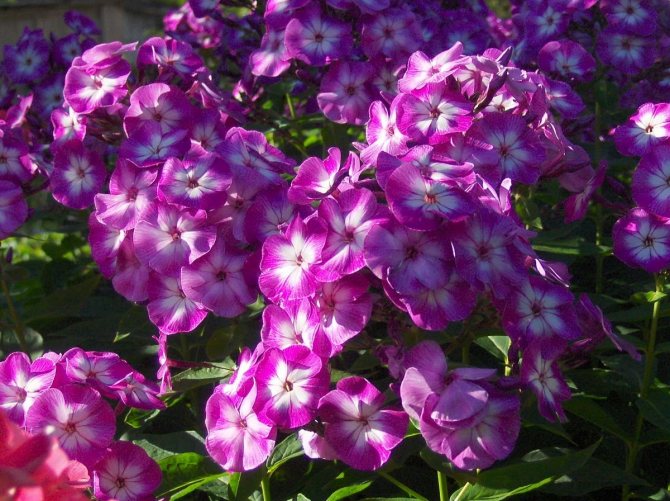

Site preparation
After choosing a suitable place for transplanting phlox, you will need to first prepare the soil on it. To carry out the procedure in the autumn period, you will need to start preparing in the summer, this process will include the following set of measures:
- All weeds are removed from the surface of the soil, after which the future flower bed is carefully dug up. At the same stage, it is recommended to remove all roots preserved in the soil layers.
- A large amount of organic fertilizers is introduced into the soil without fail, and after that, fertilizing with mineral mixtures is carried out. Rotten manure, compost, ammonium nitrate, wood ash, superphosphate, potassium salts are well suited for improving the soil. All fertilizer components must be mixed with the soil to a depth of at least 15 cm, since it is in these layers that most of the phlox root shoots are located.
- The free space around the bush should have a diameter of 35 to 50 cm, depending on its size. This entire site must be fertilized and moistened; it is not allowed to grow any other plants or crops on it. Only if this condition is met, the flowers will be able to do without another transplant for another 5-6 years.
Below is a recipe for preparing a groundbait mixture that is most effective in preparing a phlox planting site. All of these dosages are enough to process one square meter:
- A standard bucket is taken and filled with compost or rotted manure.
- Add about 200 grams to the bucket. wood ash, it is recommended to grind it first.
- Potassium salts and ammonium nitrate are added, the optimal dosage of each component is approximately 30 grams.
- The latter is added superphosphate, the volume should be no more than 50 grams.
Phlox subulate. The luxury of spring
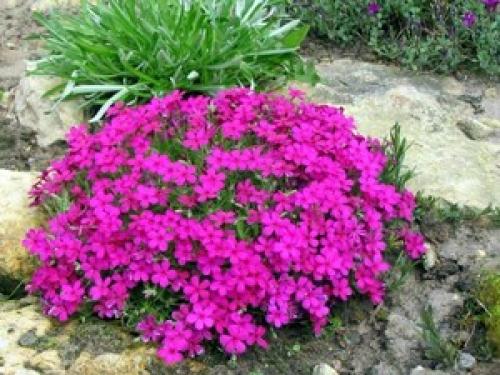

Phlox subulate is an actual and demanded plant in landscape design.This is an amazingly beautiful perennial plant. It feels equally good during a drought and during a period of severe frosts. Even in winter, needle phlox retains its decorative appearance. In nature, the plant prefers open, sunny places. Decorative varieties of flowers feel great both in the sun and when growing in partial shade.
The homeland of this plant is North America, but in the seventeenth century, phloxes began their journey to Europe. The plant was so fond of that breeders from all over the world have been breeding and growing new varieties for many decades. Thanks to such colossal work and due to many years of selection, you can now admire varieties of phlox with a hardy character and surprisingly lush and abundant flowering.


To the great regret of flower growers who fell in love with phlox, our climatic conditions do not allow the plant to form a seed. For this reason, the reproduction and division of plants occurs in a vegetative way. Phlox are bad for stagnant water, so it's important to keep an eye on this.
The appearance of phlox subulate vaguely resembles a dwarf carnation. The stems of the plant spread along the ground and are densely covered with rather tough leaves. Flowers grow well in dense turf. At the beginning of flowering, the inflorescences cover the plant so densely that it is difficult to distinguish the color of the foliage. All varieties of phlox begin their flowering at about the same time. Phlox subulate, varieties and rich colors of which - from bright white to purple (there are also pink, lilac, scarlet and red) will delight and surprise many growers.


The subulate phlox begins to bloom in the spring and, under ideal conditions, in early autumn. Dense bushes form a charming, rather dense rug, through which it is difficult even for weed grass to break through. In a permanent place, phlox can be grown comfortably for up to ten years, while it winters well. Also, the plant perfectly tolerates direct sunlight, but in the partial shade of phlox flowering it will be longer - more than five weeks.
Due to their compact root system, they can be easily planted on retaining walls and stone gardens. The appearance of the plants is very decorative, so they can be planted as curbs. In landscape design on a large area, flowers can be planted with a solid carpet, you can use contrasting shades.


Phloxes look great not only in general compositions, they can be great soloists in the landscape. It is better to separate white, pink and lilac varieties from each other - planting in single bushes - this will emphasize the uniqueness and originality of each variety. But from bright varieties, you can plant contrasting color spots or a monochrome carpet. The purple or scarlet sea of phlox flowers is an unforgettable sight.
Those who are fond of exotic will be interested in an article on growing lantana at home.
Features of planting phlox subulate
- Before planting, soil preparation is needed, it is necessary to fertilize the soil with mineral fertilizers and humus. After planting the bushes, abundant watering is required. The plant grows quickly enough, so they need to be planted at a distance of about thirty centimeters. For about a month, creeping phlox branches well, forming a dense turf. The height of the rug is up to fifteen centimeters. From mid-May, the subulate creeping phlox will begin to delight with its bright flowering. The cluster of flowers is dense, covering almost all foliage and stems.
- To create the effect of dense turf in landscape design, the bushes are planted at a distance of thirty centimeters, and then, as they grow, they direct the stems in the right direction and pin them to the ground. Very little time will pass and the desired result will be obtained (minimal care is needed).
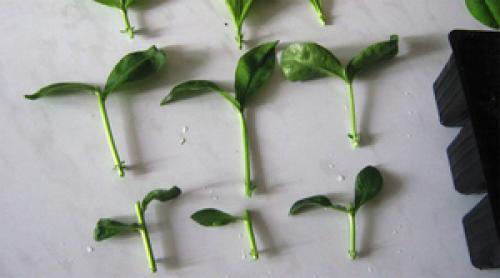

The division and reproduction of the bush must be carried out before active growth begins, it can also be planted with seeds. A large bush is divided into small ones suitable for transplantation. Each new bush with two stems and a well-developed root system should have about ten buds. A large amount of information on this issue, as well as examples and step-by-step instructions, can be found on the Internet. It will be enough to enter the keywords in the search bar: "phlox subulate planting and care photos" or "phlox subulate description".
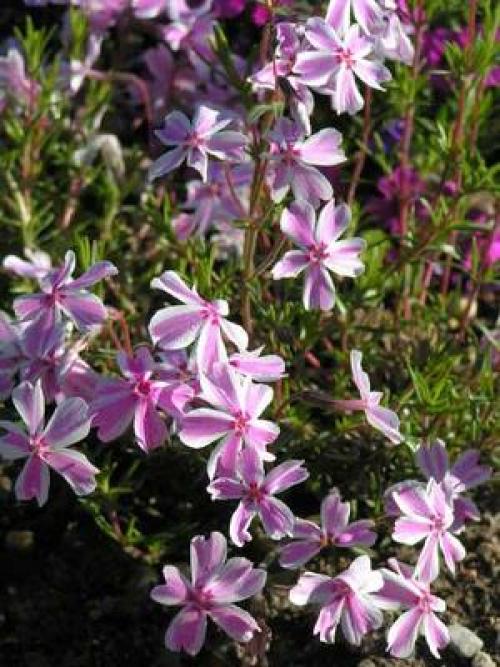

It has been proven by practical experience that subulate phlox is an unpretentious plant that does not require special care and global knowledge in floriculture for growing in flower beds. Transplants are best done in springtime, to prevent moisture stagnation and not to overdo it with fertilizers.Excessive fertilization in the soil can provoke strong growth and development of stems and foliage, and this, in turn, will adversely affect flowering.
Follow-up care after transplant
After transplanting the plant, you will need to help adapt and take root in a new place, for this it should be provided with the following care:
- All weeds must be removed from the flower bed in a timely manner, the soil must be maintained in a loosened state, special attention is paid to this point after irrigation or heavy precipitation.
- Watering should be carried out systematically, and each bush will require a large amount of water. In dry and hot periods, you can increase both the amount of water used and the frequency of the procedure.
- The soil is mulched, for these purposes it is recommended to use a mixture of straw manure, humus and peat, which are mixed in equal proportions. The layer must be at least 5 cm thick.
- Top dressing should be done on a regular basis., it is recommended to give preference to fertilizers in liquid form, since they reach the root system faster.
- Dried stems and inflorescences should be cut off in time, since their preservation will take a significant amount of energy from the plant and nutrients to try to keep these unnecessary shoots alive.
- The pinching of all shoots must be carried out in a timely manner.as soon as the need arises.


Caring for planted flowers
If you follow the recommendations of gardeners and adhere to the norms of agricultural technology, flowers will only delight. For a new phlox bush to take root easily, you need:
- timely remove weeds from the site and near the bush;
- the plant is sensitive to lack of moisture. It needs to be watered regularly, but the soil should not be waterlogged. With frequent rains, reduce the amount of watering, in dry times - increase.
- loosen the soil to prevent crust formation;
- mulch the soil, use straw manure, humus, peat mixed in equal parts for this;
- regularly make top dressing, preferably easily digestible liquid;
- cut off dried shoots and flowers at once, unlike liliaceae (dried lily is not removed from the bush immediately, but only when seed pods appear).
Preparation for wintering
Phloxes are distinguished by a very high level of frost resistance, but prolonged exposure to low temperature conditions can still adversely affect their condition, therefore, a shelter for the winter is required.
The entire preparatory process is as follows:
- Initially, all bushes are pruned, the remaining stumps should be no more than 10-15 cm high, although some gardeners practice more radical pruning at the very roots. This is due to the fact that the absence of significant shoots does not leave the opportunity for various pests and parasites to overwinter in them, so in the spring phloxes will be protected from unwanted neighbors.This procedure is carried out no earlier than mid or late October.
- The soil around the bush, as well as the remnants of its shoots, are treated with special preparations for the prevention of common flower diseases.
- 1.5-2 weeks after pruning you will need to mulch the soil around the bush.
- A shelter can be organized from peat, fir branches, fallen leaves, and other suitable material. A film is stretched from above, which will prevent moisture from entering the shelter. The film material along the edges will need to be sprinkled with soil and pressed down with heavy stones in order to reliably fix its position for the whole winter.
- In spring, when the risk of prolonged night frosts will be absent, the shelter will need to be dismantled.
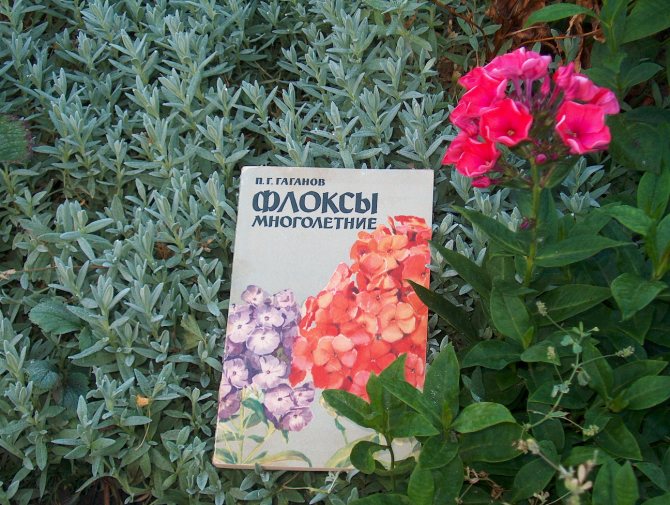

Description of the plant
The first wild species flowers had a bright red color, for which they got their name - "phlox", which means "flame". Today the culture is spread all over the world and is very popular due to its unpretentiousness.
Most phloxes are perennials that differ in:
- compact bushy form;
- densely leafy creeping or straight stems from 10 to 150 cm high;
- a powerful root system that can easily withstand lush large bushes;
- oval-elongated, oppositely located sessile leaves;
- complex inflorescences located at the tops of the shoots, which consist of many small flowers, reaching 3–4 cm in diameter;
- flower corollas, which can be dissected, star-shaped, saucer-shaped or other shape;
- numerous colors of buds, which can be both pale white and purple, red or even variegated.
Beautiful and spectacular phlox grow quickly and are winter hardy.
Major mistakes
Below are the most common mistakes that prevent phlox from taking root and blooming in full force. Familiarization with them will prevent the likelihood of their recurrence in the future:
- Too late removal of the shelter in the spring. It must be remembered that phloxes are frost-resistant flowers, so they tolerate small frosts in spring without much difficulty. At the same time, a humid and warm microclimate is formed inside the shelter; with belated dismantling, the plant can rot in such conditions.
- Failure to comply with the distance between rows or individual bushes. Depending on the size, it should be 30-60 cm, otherwise the phlox becomes too crowded, a lack of moisture and nutrients begins to be felt, which leads to a rather poor flowering.
- Failure to comply with the terms of the spring transplant. When carrying out the procedure in the autumn period, difficulties usually arise, but in the spring the timing is often determined incorrectly. There is no need to fear frost or delay this process, since all delays lead to the fact that the plants simply do not have enough time for adaptation and rooting, which is why there is no flowering in the current season.
Favorable conditions for growing phlox
The main thing to pay attention to when growing phlox is the quality of the soil. The development and decorativeness of these flowers directly depend on the fertility of the soil.
Soil requirements in the table.
| Characteristic | Description |
| Acidity | pH = 5.5-7.0 |
| Soil structure | Loose, fertile soil with a high humus content, medium moist |
| Unsuitable soils | Heavy clayey, swampy, light sandy loam, poorly drained soils |
The acidity of the soil can be determined using a special litmus test.
Phloxes feel good in the climatic conditions of central Russia. They like not very hot weather with moderate rainfall.
It is best to choose a flat area, protected from drafts and wind.
Advice! It is not recommended to plant phlox in open sunny areas.Areas where the flower will be shaded from 11 to 14 o'clock are ideal.
The following are considered favorable conditions for phlox:
- Humidity not less than 70%.
- After seed germination, for the first two weeks, the room temperature is maintained at 15 degrees, then the temperature should be 21 degrees.
- After the emergence of seedlings, containers with seedlings are transferred to well-lit windowsills, and the film is removed.
Tips for florists
Summing up, you can give the following recommendations that will be useful to growers who grow phlox:
- Despite the absence of viruses that would exclusively infect phlox, these flowers are highly susceptible to infection by any universal fungal or viral infection. Timely application of fertilizers to the soil and preventive treatment with chemicals can reduce this risk.
- All cut inflorescences, shoots or foliage are recommended to be thrown away from the flower bed., and even better to burn, as they can become sources for the formation of dangerous infections or attract the attention of insects.
- In the fall, liquid fecal feeding can be done, but this practice is not suitable for transplanted bushes only. It is recommended to carry out such procedures with bushes that grow in one place for about 2-3 years.
Pests and diseases
Under unfavorable growing conditions and improper care, plants can be affected by various diseases:
- Fungal diseases of the roots are indicated by the faintness of the color and wilting of the bush.
- Powdery mildew can be recognized by a whitish coating on leaves and shoots.
- With fomoza, the stem cracks, and the leaves turn yellow and curl.
- Leaf spot can be recognized by brown spots that grow more and more.
All diseases must be treated with special drugs that can be bought at gardening stores.
Of the pests on phlox, you can find caterpillars and butterflies, slobbering pennits, slugs, nematodes. You can get rid of them with folk remedies or insecticides.
Beautiful, long-blooming and showy phloxes can be propagated and grown independently. With proper planting and good care, bright inflorescences will decorate the garden all summer.
Watering and mulching


Phloxes are moisture-loving plants and they tolerate a lack of moisture quite painfully: they lose leaves, inflorescences and flowers become smaller, flowering times are reduced, bushes become stunted.
To prevent this from happening, it is necessary to shed the soil to the entire depth of the roots. This is approximately 1.5-2 buckets of water per 1 sq. m landings. It is better to water in the evening or in the morning.
I draw your attention to the fact that phlox should not be watered with cold water during the day in the heat, as the stems may crack and the bush may fall apart.
It is also not recommended to water on top of the leaves. If a variety is infested with nematodes or powdery mildew, such watering can lead to disease in neighboring plants.
Therefore, it is best to water the phlox on the ground around the bush, or you can even leave a hose with water near the bush for a while.
Another very important point - planting phloxes in the winter should leave saturated with water. This will help them to endure the winter well and will be the key to abundant flowering in the next season.
The best way to keep soil moisture is by mulching. The peculiarity of phlox growth is that they grow along the periphery of the bush, and its middle part gradually grows old, sticks out to the soil surface and becomes bare.
The roots are completely unprotected and if the winter is cold and snowless, then the danger of freezing is very great. And in the heat, such bushes suffer greatly.
To preserve moisture in the heat, drown out annual weeds and protect plants from freezing in winter, it will be enough to mulch the soil under the phlox bushes with a layer of 5 to 7 cm.
For mulching, you can use cut and chopped grass, compost, tree bark, neutral peat and humus.
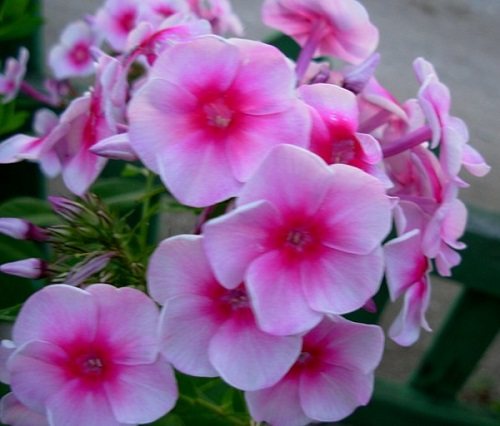

If you do not mulch the plantings, then periodically you need to loosen the soil, especially after heavy watering or heavy rains.
Loosening is necessary to prevent the formation of a dense soil crust, which impedes the flow of air to the roots.
But at the same time, do not forget about the peculiarities of the development of the phlox root system, which grows upward and along the periphery, and gradually the roots appear practically on the soil surface.
In this regard, we loosen very carefully, without damaging the roots.
Weed control is also of great importance when growing phlox, since they not only inhibit the planting of flowers, but they also parasitize a huge number of pests, fungi, microorganisms and viruses that pose a threat to the health of our plants.
Mulch the soil under phlox and fight weeds
Mulching should be a mandatory component of phlox care. The layer of mulch must be re-created every spring and then renewed, providing plants with additional protection against complete drying out of the soil, its compaction and at the same time lowering the temperature of the soil to create the most comfortable conditions for the development of rhizomes and the establishment of powerful flower stalks.
A layer of mulch will also save you from weeding. But if you have not covered the soil under the bushes with a protective layer, take time to combat weeds several times over the summer.
Choosing seedlings
In modern garden stores, there is a huge selection of phlox seedlings. Regardless of the variety, they are usually sold either in containers or in sachets containing peat and sawdust. This mixture protects the roots from drying out.
Important: seedlings in containers, as a rule, are brought from Europe. This makes their acclimatization to the conditions of the Russian climate a little longer.
You need to carefully monitor which seedling you are going to purchase. A good phlox has:
- even leaves without visible damage;
- healthy nerve roots (up to 15 cm in length);
- smooth thick stem with rough green skin;
- formed kidneys;
- healthy shoots (3-5 pieces) from 2 to 6 cm.
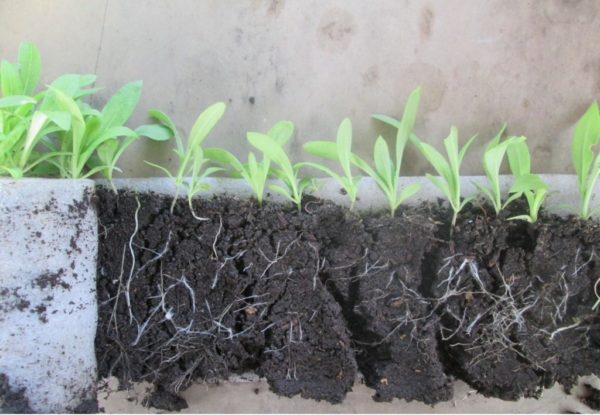

Good phlox seedlings look healthy
You should not buy seedlings if they have damaged roots, yellowed or sluggish leaves, darkened stems - all this indicates the low quality of the planting material.
Caution, danger: powdery mildew and spotting
Phloxes often suffer from powdery mildew and spotting. Signs of disease: dots and specks on the leaves, wrinkling. Diseased leaves should be removed, and the plant should be treated with Bordeaux liquid or analogs. Can be sprayed for prophylaxis. In this case, one should not wait for the symptoms of the disease, but the treatment should be carried out in the spring.
Plants can be attacked by filamentous worms or nematodes. To avoid adversity, phlox should not be planted in areas where strawberries grew. If the plant is already sick, there is only one method of treatment - elimination along with a clod of earth and disinfection of the soil with lime.
For preventive and therapeutic spraying, you can recommend insecticides "Sumi-Alpha", "Karate", "Fury", "Kinmiks". For more information on pest control, see the video:
Planting phlox seedlings in open ground
At the end of May, you can safely plant seedlings of annual phlox in the ground. For these plants, a sunny or semi-shady area with well-drained loose soil is chosen in the flowerbed. An interval of at least 20 cm must be observed between phlox bushes and other plants. The distance between the holes depends on the variety of flowers and their estimated height (20-40 cm).
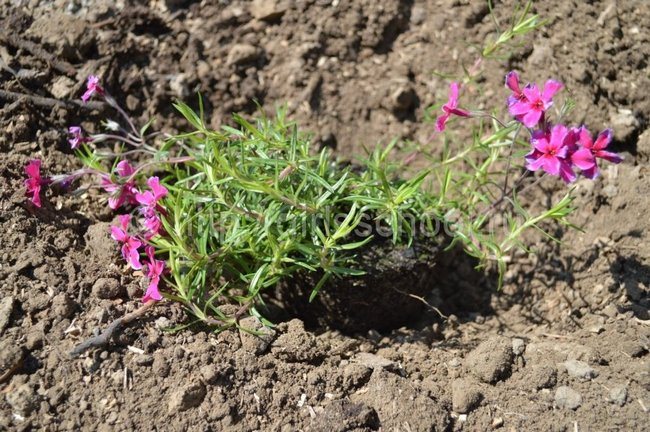

Phlox in winter and after flowering
Annual phloxes may bloom next year, but they won't be as tall and pretty. Therefore, it is recommended to harvest the seeds in the fall.The dried tops are cut off, and the earth is dug up, removing the phlox root.
Growth buds of perennial phloxes can freeze in a snowless winter. Especially if the outside air temperature drops to 10-15 degrees below zero. If the temperature drops to -20-25 ºC, then the root system of plants will also die. Therefore, in the fall, the yellowed and dried tops are cut off, and the root necks of the plant are sprinkled with soil with peat. Then everything is covered with straw, fallen leaves or spruce branches so that the root system can overwinter. If in winter there is a layer of snow 50-60 cm thick on the street, then the plants will withstand 30 degrees of frost.
Watch the video! Prepare phloxes for wintering
Phlox in landscape design
This wonderful culture is gaining more and more popularity among gardeners and deservedly enjoys their love and attention. It's not just a matter of relative unpretentiousness, although this is a very important component of their success. Phlox flowers, depending on the species, are very different in their color palette, which allows you to play with flowers and create various interesting flower bed variations. In addition, phlox are perfectly combined with other garden crops: conifers, shrubs or exotic varieties.
Depending on the goals and desires, the gardener can arrange on his site a green flower bed with a bright colored middle - a group of phloxes - or a whole colored carpet with smooth overflows.


Spectacular carpet of phlox in different shades
Note: during the day, the shades of phlox flowers may change slightly. Lilac will turn purple and blue will turn purple.
One way or another, the variety of species of this garden culture gives flower lovers room for imagination and endless possibilities for decorating their sites.
We maintain comfortable soil moisture
The main component of caring for bush phlox is watering. These plants prefer constant soil moisture, they feel good only in fresh, at least slightly moist soils, and during the period of active growth and budding, they react extremely negatively even to short periods of drought. For phlox in spring and early summer, as well as during the most active flowering, it is best to organize regular, systemic watering, and not react to the vagaries of the weather.
Carry out the procedures carefully, because the leaves of this plant do not withstand getting wet and when moisture gets in, bush phloxes become extremely vulnerable to powdery mildew. Watering must be done very carefully and slowly, with warm, preferably and settled water, in the grooves and so that even small drops do not splash onto the leaves.
A Few Tips
- The colors of phlox planted in a sunny place will be brighter, in the shade - more calm.
- Phlox are plants that are very responsive to organic fertilizers. Experienced flower growers recommend using horse manure for this purpose, but always rotted. Fresh manure will kill plants instantly. Plant compost works well too, but care must be taken not to use phlox itself in its preparation. This is due to the fact that pathogens and pests of phloxes can persist in compost if the conditions for its preparation are not followed and infect plants as a result of feeding. When harvesting in autumn, phloxes should be removed from the site, or better - burned.
- If phlox seeds are sown not in open ground, but indoors, they must be stratified - kept in the refrigerator for 2-3 weeks.
- To make them bloom thicker, wilted flowers should be removed. For better tillering, it is advisable to pinch perennial plants in the summer over the fourth or fifth pair of leaves.
Phlox pests
Most often, phlox is affected by a nematode, a tiny filamentous worm that feeds on sap from plant tissues. The inflorescences acquire an incomprehensible shape, the flowers become smaller, and the stems are thin.It is almost impossible to fight this pest, so the affected bushes will need to be dug up and burned.
The soil where the affected plants grew is treated with nematicides three times with an interval of 20 days.
At night, the bottom of the stems, leaves and even flowers can eat naked slugs. They live in the upper layers of the soil, therefore, as a preventive measure, it is necessary to loosen the soil and remove weeds. If slugs are found on the site, it is recommended to dust the soil with lime, ash or a mixture of ash and tobacco dust.
Caterpillars of butterflies that damage phlox are harvested by hand. However, in case of mass infestation, the flowers are treated with special means from leaf-gnawing pests.
Types of phlox
Phloxes are perennial and annual. The main species groups are distinguished. The classification is based on stem height, flowering time, plant shape, flowering time.
- Paniculate view
The long-known flower, which is usually called a garden flower, is still popular. Paniculate phlox species have a rich palette of colors and lush inflorescences. Purple, white, crimson and purple caps adorn the flower beds. It happens that the main tone of their leaves is painted with other colors. Using plants in landscape design, you can achieve a unique originality. The duration of their flowering gives weight to their characteristic features. Phlox blooms throughout the summer. Their bushes are erect, from 50 to 140 cm high, the stems are covered with many leaves.
- Subulate phlox
Perennial species, ground cover plants (up to 20 cm) with delicate fragrant flowers. They cover curb beds, rockeries, alpine slides with a beautiful carpet. The color scheme is dominated by blue, white, lilac-violet tones. But there are varieties with juicy colors, raspberry, salmon.
- Splayed phlox
Wide-spread phlox (phlox divaricata) are short plants, the stems of which extend to a maximum of 40 cm, but more often their length is half as long. The peculiarity of the species lies in the creeping shoots, which, expanding, form a turf, and in loose thyroid inflorescences.
- Drummond
A beautiful annual plant, the flowers of which resemble carnations and have a diameter of 1.5 cm. The color is different: purple, pink, red, white and two-tone. An eye can be seen inside the flowers, they look quite bright. Phlox bushes are branched, reaching in growth from 30 to 60 cm.The plant is hardy, after rains the appearance of flowers is well preserved. To emphasize all the beauty of Drummonda, phloxes are best planted in groups on alpine slides or mixborders.
We select conditions that are comfortable for bush phlox
Phlox, despite the fact that they are used most often as plants for decorating flower beds and flower beds, cannot be ranked among the most sun-loving garden crops. Their bright, cheerful palette, as well as the ability to release an amazing number of inflorescences that completely hide the greenery on the bush, is preserved both in the brightest light and in partial shade of varying intensity.
Moreover, in light shade and in diffused lighting, phlox blooms much longer (generally a month longer) than their counterparts exposed to heat and midday rays. This can be explained very simply: bush phlox like good lighting, but do not react too well to heat and heat.
It is extremely important for these plants that the soil near the rhizome does not overheat, and the heat always affects the growth rate of the plant and the ability to absorb nutrients, air and moisture from the soil. That is why in partial shade, where the soil under direct rays does not heat up so much, phlox always bloom more colorful.
Phloxes are not afraid of winds and drafts, but in areas with increased wind activity they often lie down and need a bandage.
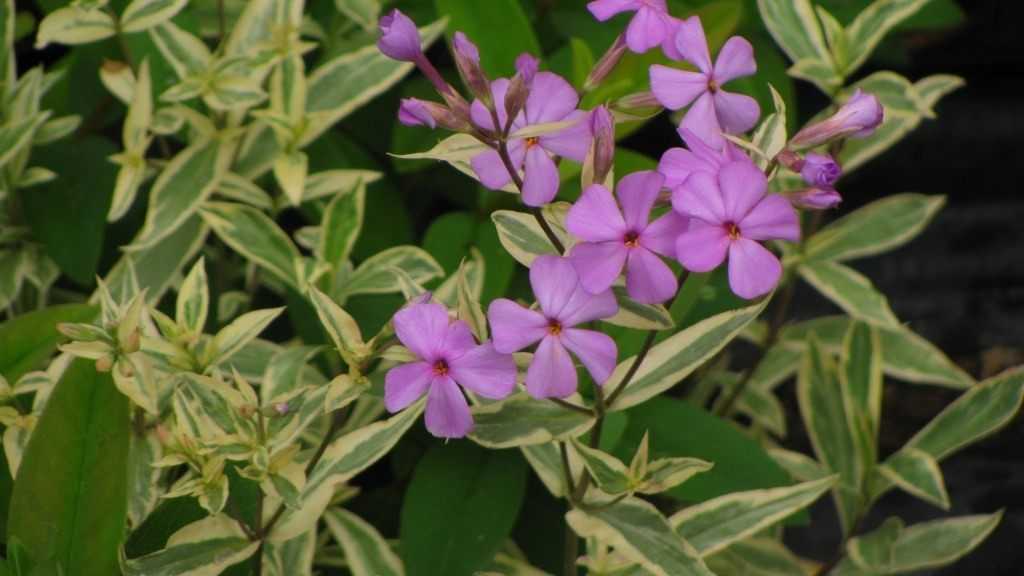

Phlox smooth, 'Triple Play' variety.
Preparing the soil for planting on the site
The soil for planting phlox, if necessary, can be improved:
- Sand and manure are added to clay soil.
- Lime and clay are added to the sandy loam soil.
- Peat, lime and clay are added to the sandy soil.
- Peat, manure and compost are added to non-fertile soil.
The site must be prepared in the fall. First, add:
- up to 8 kg / m. sq. peat or manure;
- if the earth with high acidity is additionally added up to 300 g / m. sq. lime.
The earth is well dug to a depth of at least 30 cm. In the spring, the site is dug up again and nitrophosphate and potassium salt are added. 7-10 days before sowing seeds in open ground, the site is watered with a solution of potassium permanganate for disinfection.
Preparing phlox seeds for sowing
Collect phlox seeds. Before that, it is necessary to determine the degree of their maturity. This is not particularly reflected in their appearance, because they are located inside the boxes. Having missed the moment of ripening, the seeds can crumble from the ripe boxes, and you will not even notice it. If not enough ripe seeds are collected, they will not be able to ripen.
To determine the degree of maturity, take an awl, carefully drill one box and examine its contents. It should contain rather large seeds, colored green and having a dense structure. Planting material can also be purchased at a flower shop.
Seeds of phlox perennials rather quickly lose their germination, which is why you should not wait for spring to plant them. Please note that the full development of plants is possible only after the seeds are frozen, so planting should be done soon after they are harvested.
Choosing a method of plant propagation
Annual phloxes are usually grown from seed. Perennial phloxes reproduce well by roots and cuttings. When is the choice made in favor of seed propagation? Most often this happens in cases where it is necessary to get a lot of plants at once - for example, to create a dividing strip or a border on the site, decorate a large area at once. Then it makes sense to mess with the seeds.
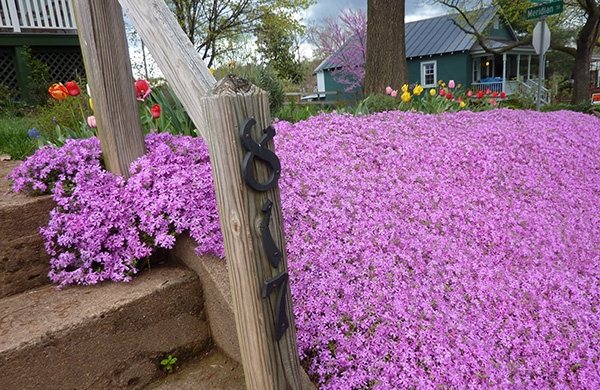

This method is also used by breeders or simply amateur gardeners to obtain plants with new properties - for example, when two varieties were planted side by side and could become dusty. For reproduction, for example, of a rare variety, its improvement, obtaining planting material in large quantities, preparation for participation in the future in plant exhibitions, the method of plant division or cuttings will be preferable.
We grow bush phlox
Decorated with numerous inflorescences of pastel shades, bush phloxes seem to be covered with a foam of lush ruffles. These plants are today ranked among the most unpretentious and popular herbaceous perennials that bloom during the summer.
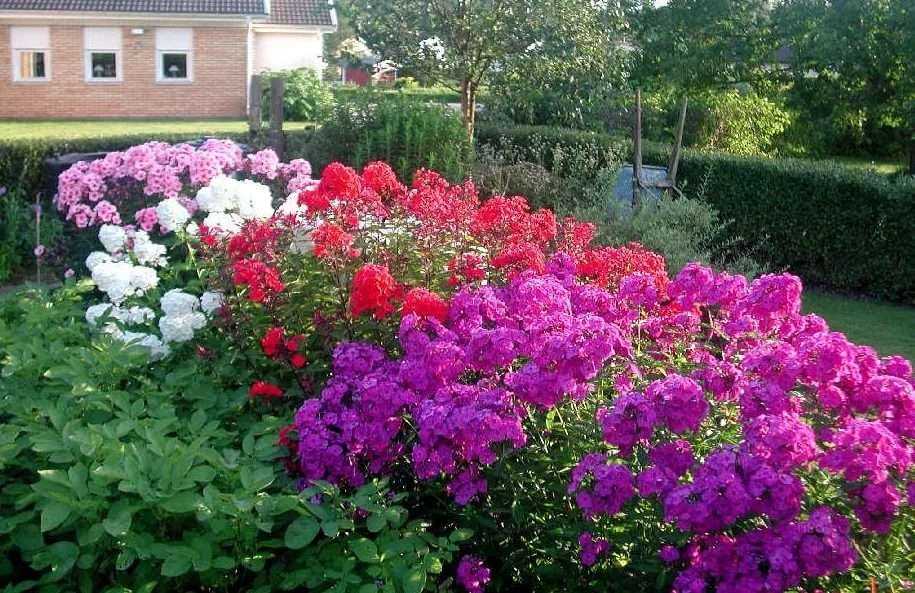

Bush phlox.
Tall bushes with somewhat sloppy greenery have long been considered a typical village culture, but the active expansion of the varietal palette and the abundance of flowering, with which it is difficult to compete with other plants today, fortunately, have changed these trends. Bush phloxes respond to even minimal care with such colorful flowering that it is impossible to imagine a single summer flower garden without them.
How phlox reproduce
Most of the plants of these species are perennials. Only Drummond, an annual, can only reproduce with seeds. Phlox propagation methods: Vegetative method: dividing the bush, layering and cuttings. Growing from seeds: seedlings and directly into the ground.
Fresh articles about garden and vegetable garden
Pepper seedlings do not grow, stands still, what to do?
If the seedlings of cucumbers are very elongated, what to do?
Planting peas in spring sowing: when to sow, how to plant correctly?
Transfer
It is better to transplant rhizomes in the spring (in April-May) or in the fall (in September). In the fall, the stems should be pruned, leaving one third. It is recommended to replant the bush every 3-4 years, dividing the rhizomes into parts.This stimulates more lush and long lasting flowering. The procedure is carried out in several stages.
- Dig an earthen lump with a shovel or pitchfork, trying not to damage it.
- Remove excess soil, examine the roots.
- If necessary, divide the rhizome into 2-3 parts with a shovel.
- They dig a hole about 25 cm deep, pour humus, sand.
- Set the root, sprinkle it with loose earth on the sides, tamp it with your palms.
- The soil is regularly loosened after transplanting, the first 3 weeks are watered every 3 days.
- The intervals are mulched with mown grass or peat, weeded.
What are these plants?
Phlox are flowers native to Europe (mid-18th century), belonging to the cyanide family. This plant got its name from the Swedish botanist Karl Linnaeus (1737). If we translate the word "phlox" from the Greek language, it will become clear why the flowers were named that way. This word is translated as "flame". Indeed, their flaming inflorescences attract and delight the eye.
Table 1. Phlox characteristics
| Sign | Description |
| Life span | Perennial / annual (some species) |
| Stem shape | Upright / creeping / ampelous |
| Height | 10 - 150 cm |
| Leaf shape | Lanceolate, ovoid, oval |
| Flower shape | Tubular, wheel-shaped, star-shaped (depending on the type) |
| Flower size | 3-5 cm |
| Number of flowers per inflorescence | Up to 100 pieces |
| Fruit shape with seeds | Boxes |
| Number of species | Up to 85 items |
Variety of species
Phloxes differ not only in texture, shape, size of flowers, but also in how many seasons they will delight their owners.
Note: most phlox species are perennial, but there are also annuals. These include the type of "drummond".
"Drummond"
This beautiful annual is very common among gardeners. Its flowers are shaped like stars and can be completely different colors: burgundy, white, pink, purple and even blue. It begins to bloom in late spring and continues to bloom until the end of the growing season (October). With the onset of the first frost (-5, -7 ° C), the plant dies.
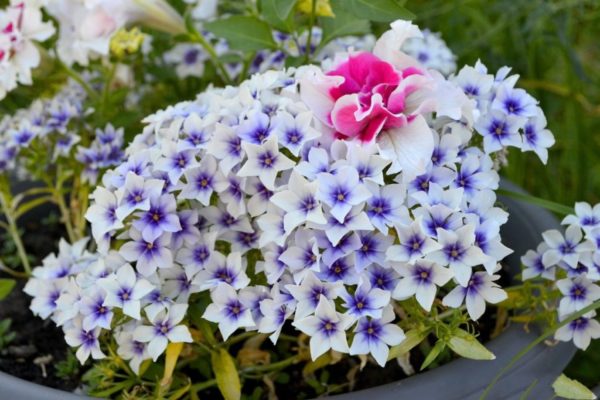

"Drummond"
"Red Wings"
This 20 cm flower bush is distinguished by its unpretentiousness and rich pink color. We are equally tolerant to cold and heat, however, it feels best at an average temperature of 15-22 ° C. It is a perennial: its flowering can be enjoyed twice in one growing season (in June and September).


"Red Wings"
"Petticoat"
A distinctive feature of this variety is its flowers. The petals bifurcate at the ends, making them look like the wings of a moth. He loves sandy soil, so gardeners called him "sandy phlox". Can easily withstand fairly low temperatures (-15 to -19 ° C).


"Petticoat"
"Blue dreams"
A perennial that blooms once a season (May-June). This species belongs to undersized phlox: delicate blue flowers creep along the ground in a dense carpet. It grows well both in the shade and in the sun, tolerates even the first frosts, and therefore is very loved by gardeners.


"Blue dreams"
"Alexander immer"
This perennial is able to bloom for almost three months in a row (June-August). At the same time, the bright sun is not at all an obstacle to its purple inflorescences: they do not fade and do not become paler. It can reach a height of 50 cm, its stem is dense and resistant.
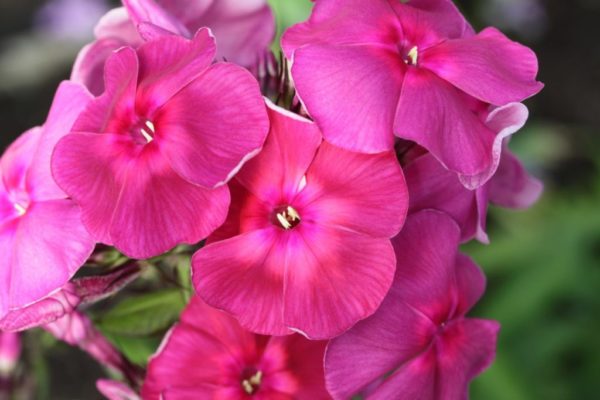

Phlox "alexander immer"
"Albatross"
Phlox variety common among summer residents. Its rounded flowers can reach 5 cm in diameter and have very delicate and beautiful pale blue, white or slightly pinkish shades. Fungal diseases are almost not scary to him, however, like frosty or hot weather.
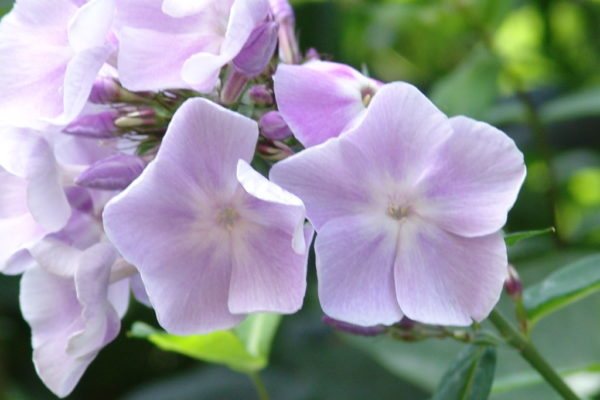

"Albatross"
"Bud"
The original type of phlox. Lilac flowers are almost always closed, which gave the name to this variety. Only sometimes you can see how one or two buds from the entire inflorescence open. This happens on days of prolonged heat.It reaches a height of 60-70 cm and grows quite well.


"Bud"
"Dove of peace"
Received this name for the perfect white color and large rounded inflorescences. The bush is quite high - up to 90 cm. Resistant to temperature extremes, reproduces well and grows quickly.
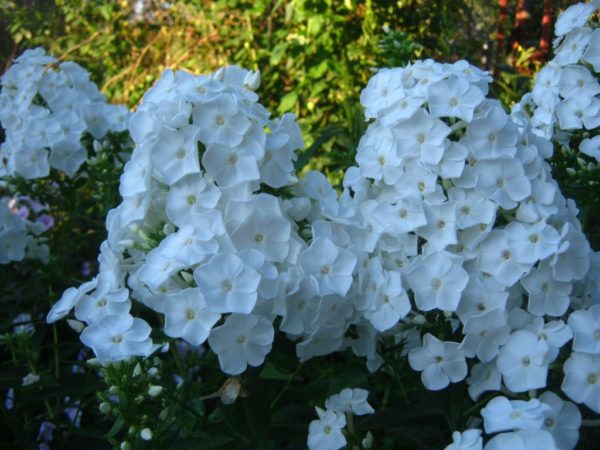

"Dove of peace"
"Cinderella"
Light lilac spherical inflorescences have conquered many gardeners. The flowers of this variety are incredibly beautiful: their center, as it were, forms a purple ring, from which delicate petals extend. The height of the bush is average (50-60 cm).


"Cinderella"
Video - Pick one-year-old phlox
Choosing high quality soils
For phlox on a flower garden, it is necessary to provide high-quality, developed soils. Like all typical perennial flowerbeds, phlox grow best on sandy loam and loamy soils. They need nutritious, light, friable, at least slightly moist, but excluding waterlogging of the soil, previously improved by applying fertilizers and deep repeated digging.
For bush phlox, all types of compacted, sandy, and also excessively dry earth mixtures are categorically unsuitable, in which normal tall greens will not form and it is impossible to achieve the flowering typical of the variety.
General information
Phlox are flowering perennial or annual herbaceous plants that form the genus of the same name in the Sinyukhovye family. It includes only about 85 species. Of these, about 40 species are grown in gardens and in private plots, and some of them have been growing for more than two hundred years.
A beautiful sonorous name for the genus (Greek phlox - flame) was given by none other than Karl Linnaeus. The exact date of the name of this taxon is even known - 1737. It is believed that the botanical scientist was inspired by the vibrant colors of these truly wonderful flowers.


On the territory of our country, only one wild species is known - Phlox sibirica (Siberian phlox), which is widespread in the mountainous areas of Western and Eastern Siberia, in the Far East. In the Republic of Bashkortostan and the Chelyabinsk region, it is listed in the Red Book. This is a perennial flowering creeping plant that produces straight shoots on which flowers open. It is traditionally used in folk medicine to treat diseases of the skin, nervous and respiratory systems. Most of the phlox species come from North America.
Phlox diseases
They are divided into viral and fungal.
Here is a photo of the diseases.
Viral:
- rattle. Light spreading spots on the leaves;
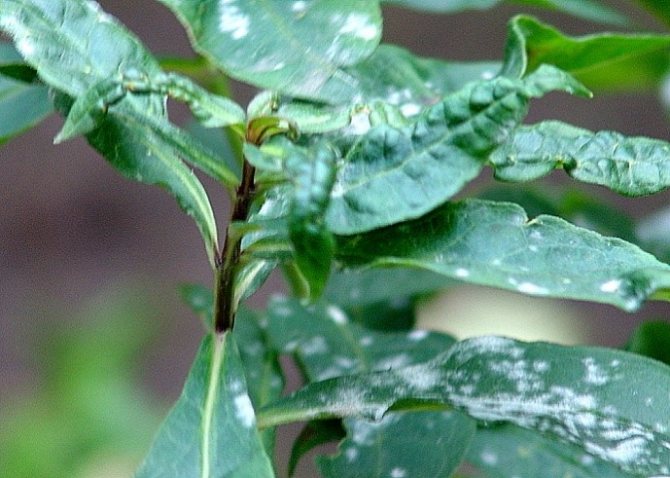

- necrotic spotting. Dark brown spots on the petals;
- ring spot. White spots covering plants deform the leaf shape over time;
- foliage curl. The leaves are covered with tubercles, the stems become brittle.


Important. The best way to fight viral diseases is to destroy the bush and treat the area where it grew.
Fungal:
- septiriosis. Leads to the death of leaves, due to the appearance of gray spots. Then the foliage turns yellow and red;
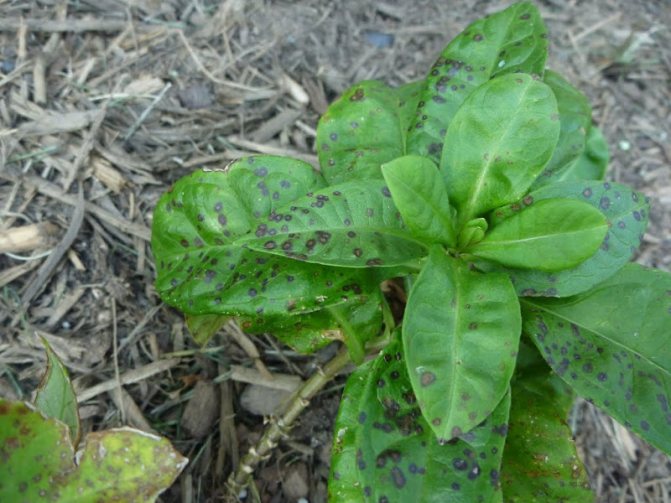

- powdery mildew. Cobweb spots cause leaves to dry out;


- rust. The emerging and spreading brown spots lead to the death of phlox foliage.


In addition, caterpillars, nematodes, slobbering pennies and other pests threaten.
Important. Timely treatment with complex preparations against pests will prevent diseases. Try to identify and destroy diseased plants in time.
Self-procurement of seeds
Seeds should be collected from the bushes after the leaves have begun to dry out, and the boxes have turned brown, but not yet dried. The stems are cut along with the boxes, bunches are made of them and hung in a cool dry room (on a glazed balcony, veranda, in a closet, in an attic) for further ripening. So that the seeds, after cracking the capsules, which usually "shoot", do not scatter and are not lost, the bundles are placed in fabric (gauze) bags.The boxes need to be monitored, and as they dry, collect them and bring them into a warm room. However, this advice is only true if you are going to plant them right away, since the seeds of the subulate phlox and other popular varieties cannot boast of long germination. In a warm room, they lose their properties very quickly. To prevent this from happening, you should keep them cool until planting, you can mix them with sand.
Bloom
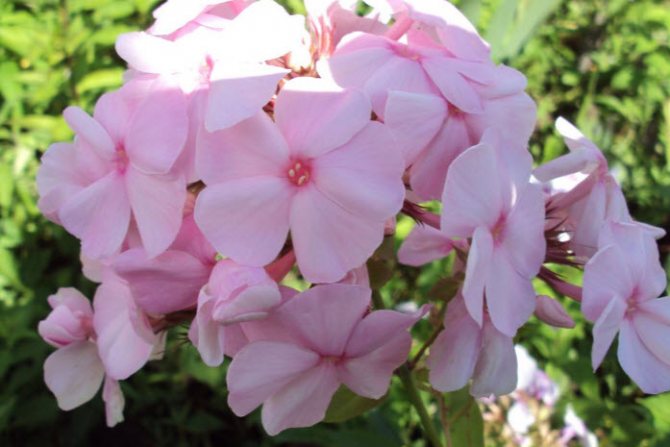

When phlox bloom, the garden is colored by a sea of various shades - from snow-white to deep purple. You can select varieties and species in such a way that flowering can last for about six months, from May to September.
Flower shape and flowering period
In phlox, tubular flowers end in a wide funnel, diverging into petals. Flowers are collected in a lush spherical inflorescence, there can be about 60-95 of them in each.
The duration of flowering is different for different species and varieties, on average, the process lasts from 16 to 28 days.
Hello dear readers!
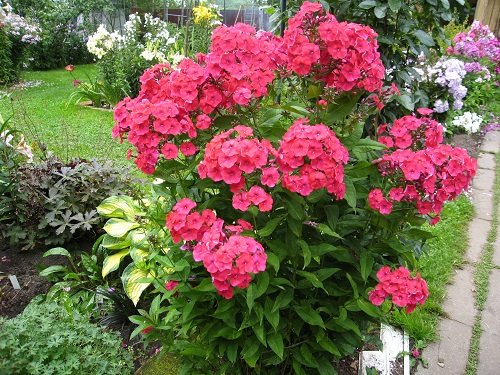

We will continue, as agreed, the conversation about phlox
... In the previous article, we got acquainted with which phlox seedlings are better to choose and with the variety of their varieties.
In the same article, we will talk directly about the cultivation of the most common phloxes - summer flowering ones.
Many growers consider these flowers to be problem-free plants. But this is far from the case, phlox there are requirements that cannot be called modest.
And, only after completing them, we will be able to see this lush colorful foam of phlox with an intoxicating, delicately bitter aroma with nutty notes, which will fill our garden, resembling an endless sea, agitated by the breath of a warm summer breeze.
The garden takes on a bright festive look and this unrestrained flower extravaganza can last until the very frost, with the right selection of varieties and species.
So let's figure out the secrets cultivation
our loved ones
phlox
.
Phloxes love food
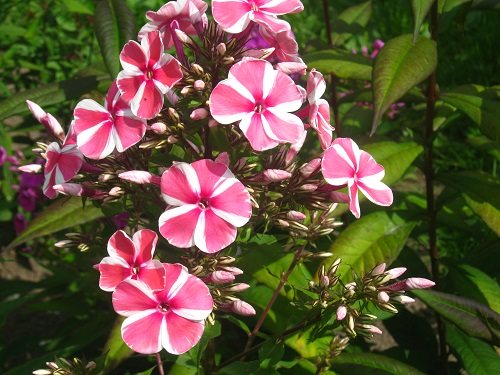

So that phloxes can grow in one place for a long time without transplanting and bloom profusely, it is necessary to apply fertilizers annually.
Also, fertilizing is required for plants throughout the growing season.
You can feed them 5-6 times per season. The second half of May is the time of intensive plant growth - the emergence of seedlings and the beginning of the formation of peduncles.
During this period, phloxes most of all need nitrogen, so try to select mineral fertilizers that contain more of it in their composition.
First feeding
we carry out immediately after the snow melts. Mineral fertilizers can be applied both in dry form, followed by embedding it in the soil, or by dissolving the granules in water, which will speed up the delivery of nutrition to the plant roots.
The second
We will carry out nitrogen-containing feeding at the end of May, using an infusion of mullein, nettle or horse manure with the addition of sodium humate.
If the plant has a lack of nitrogen, then its foliage will be pale, and the plant itself will grow poorly.
But at the same time, it is impossible to overfeed with nitrogen, since in this case the green mass grows strongly, and phlox will bloom worse. In addition, the stems of the plant crack, the bushes fall apart and in such a weakened form they are more often affected by diseases, annoyed by pests. So, everything is good in moderation.
During the budding and flowering of phloxes, we carry out third feeding,
in which we reduce the proportion of nitrogen and increase the amount of potassium by introducing potassium sulfate (10 g per bucket of water) or ash (1 glass per 10 liters of water).
A sufficient potassium content in the soil enhances the color of the flowers, forms a lush bloom and helps phlox bloom for a longer time. Lack of it reduces the decorative effect and brightness of flowering, and a brown dry rim appears along the edge of the leaves.
When fourth feeding
to this composition we add another 10-15 g of phosphorus fertilizers (superphosphate or double superphosphate), which contribute to lush flowering, seed ripening and prevent the occurrence of fungal diseases, as well as increase resistance to adverse weather conditions.
Next top dressing (fifth
) falls on the period when phlox begin to bloom and seed pods are formed. At this time, fertilizing is carried out with phosphorus-potassium fertilizers (20 g of superphosphate and 10 g of potassium sulfate per bucket of water).
For the introduction of phosphorus into the soil, it is very good to use bone meal, which is an organic fertilizer and provides plants with this element for a long time.
Phloxes begin to prepare for winter and are in great need of phosphorus and potassium for better ripening of rhizomes and laying of renewal buds.
Also, do not forget about foliar feeding on leaves, to which phloxes respond well.
It is best to feed the plants in the evening after abundant watering, and even better after rain, when the soil is well saturated with moisture.
If the soil is dry, then top dressing can cause burns to the roots and the plants themselves.
We try to apply all fertilizers under the base of the bush, avoiding their contact with the leaves.
Applying the correct nutritional system, we will be able to grow phlox in one place for seven years without losing their decorative effect.
And, accordingly, if the need for nutrients is not satisfied and the care for them is poor, then the bushes age very quickly.
Method for accelerated germination of seeds
Florists who have extensive experience in growing different varieties, including subulate phlox, from seeds, recommend keeping in mind that phloxes, especially annuals, like to germinate in the light. Therefore, when sprouting at home, some of them advise placing the seeds on toilet paper or paper towel moistened with water with the addition of a growth stimulator, under which a plastic wrap is placed. The paper strips together with the film are rolled into rolls and placed in a well-lit place (you can put the rolls in a regular plastic cup). After the sprouts appear (it usually takes 2-3 days to peck the seeds!), The tapes are unrolled, sprinkled with earth on top and again placed in a bright place until sprouts suitable for planting are obtained.
